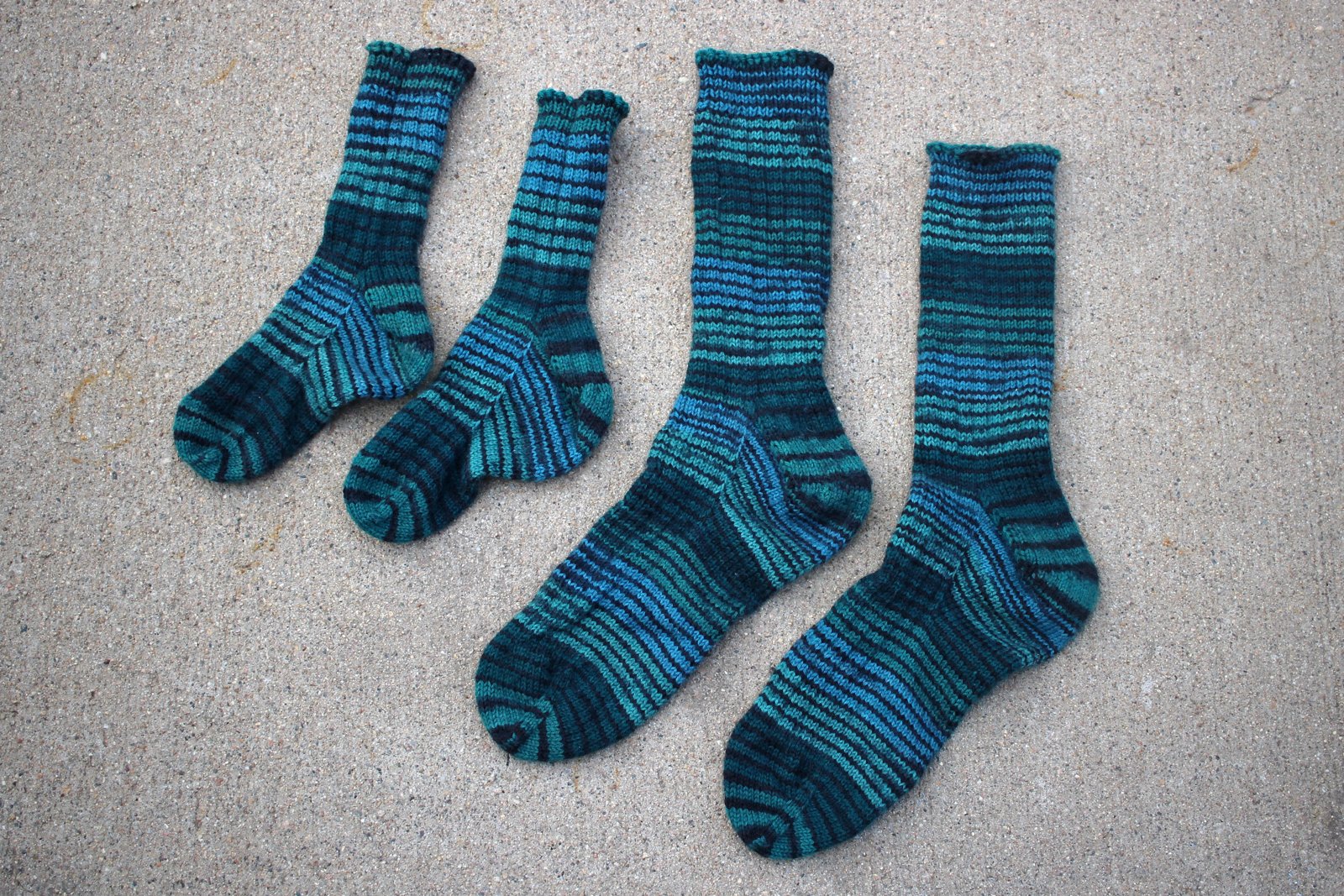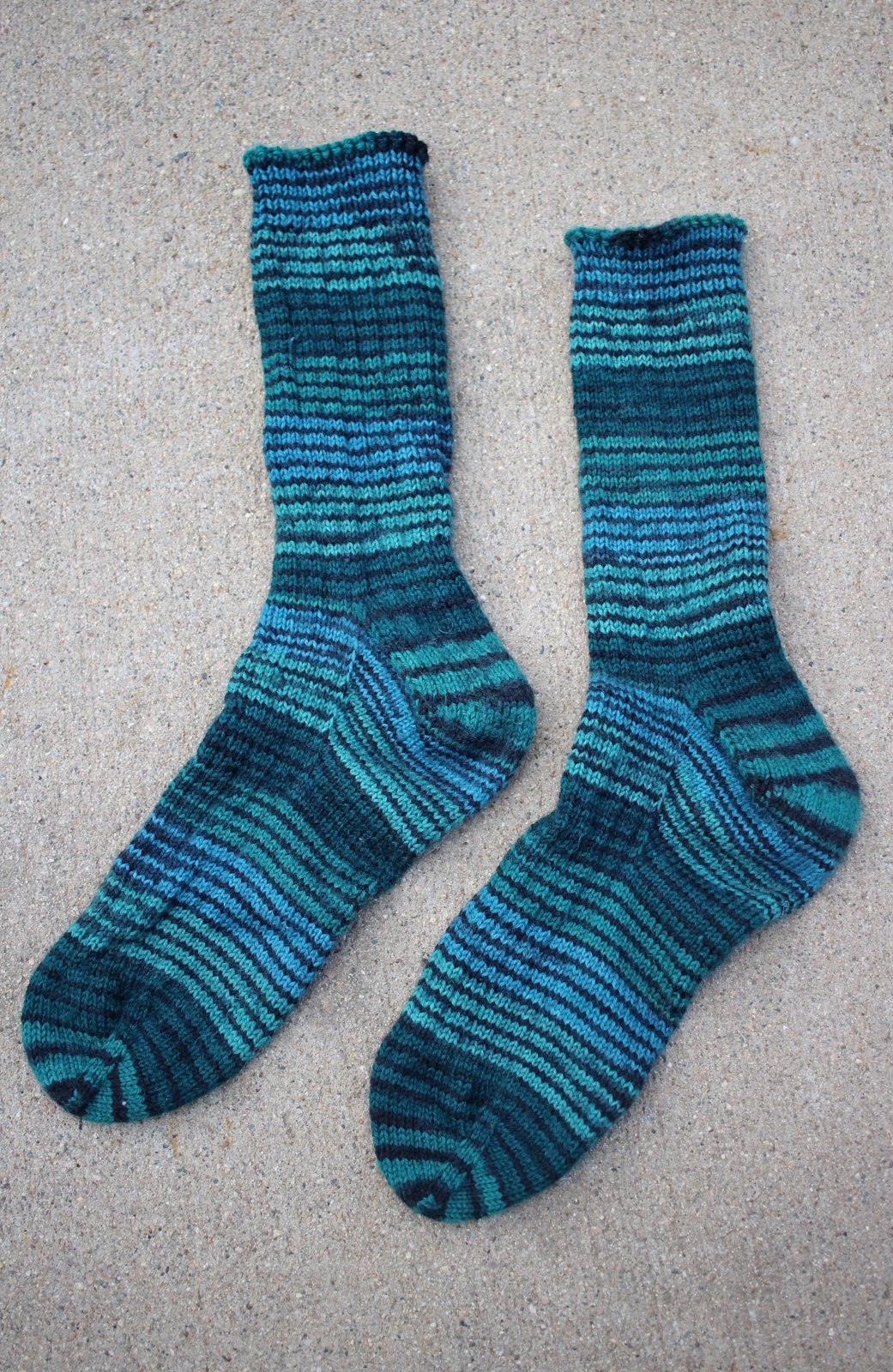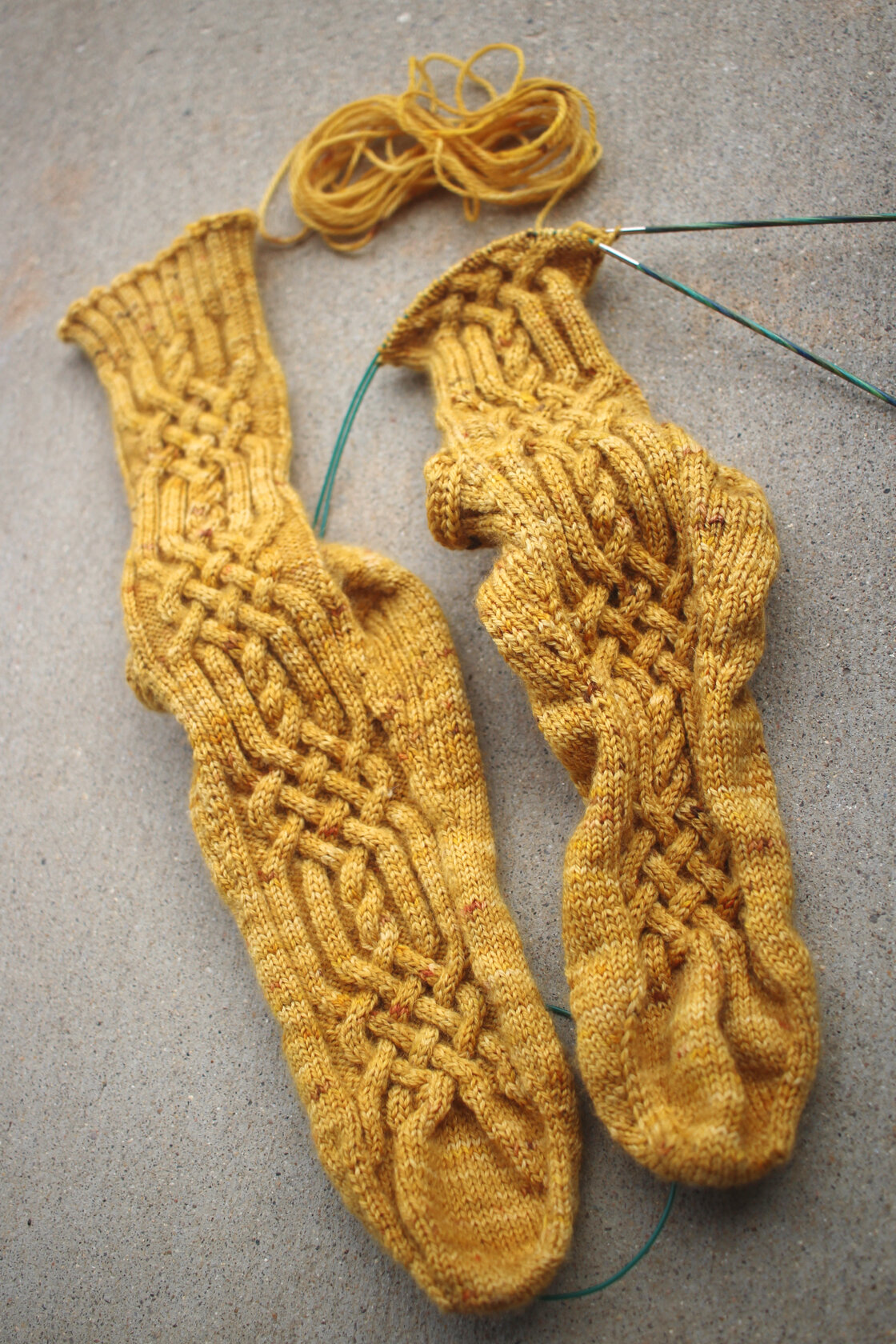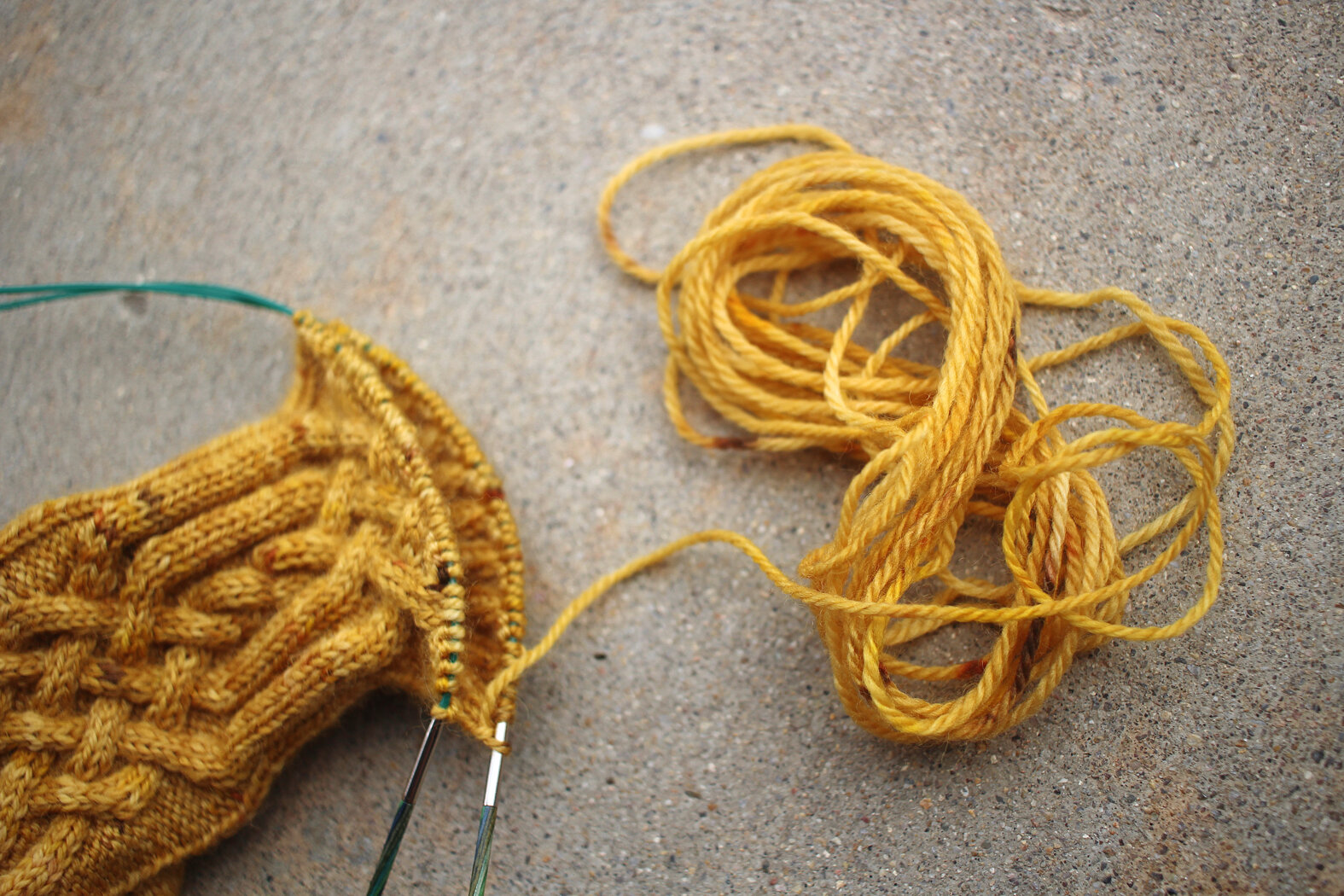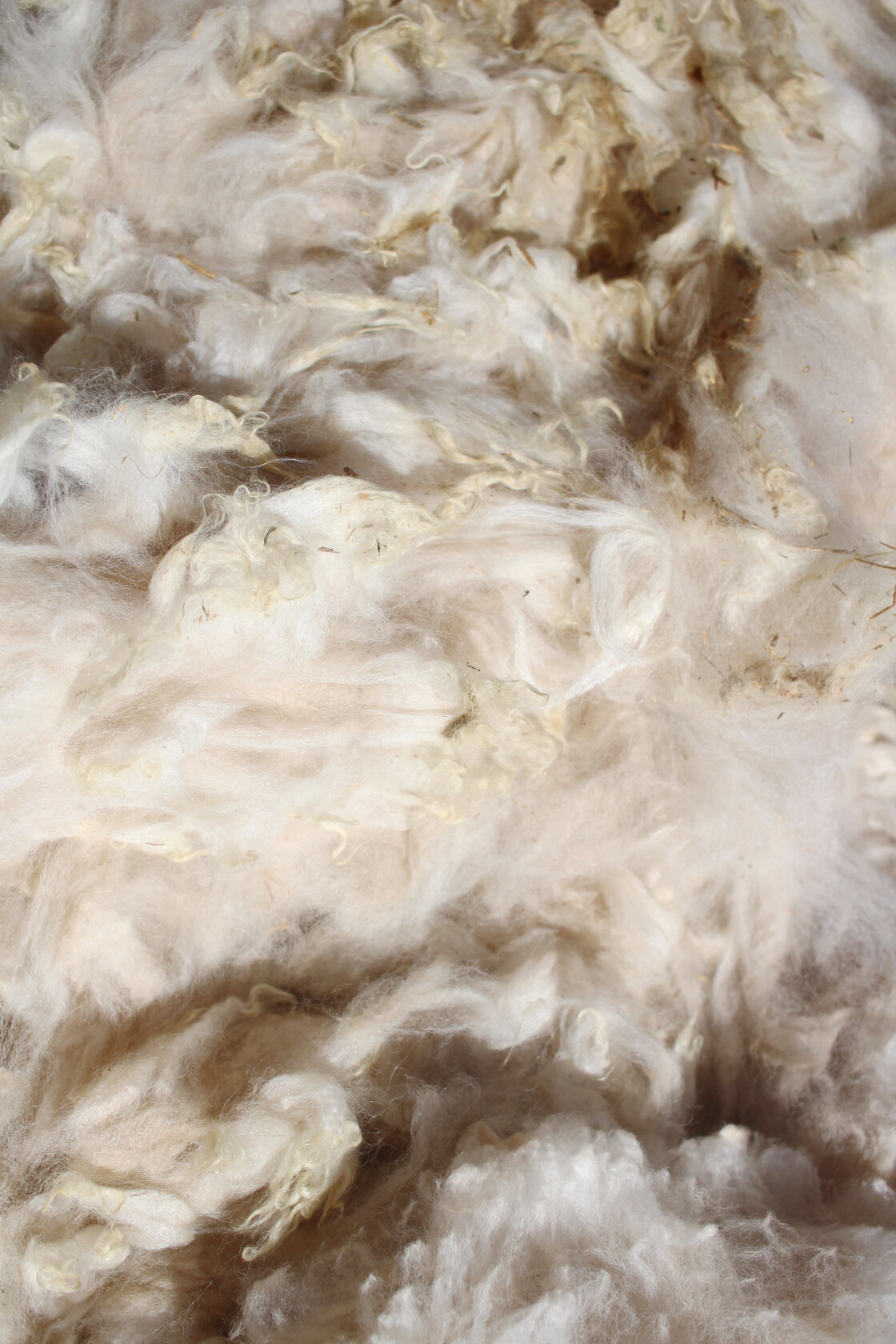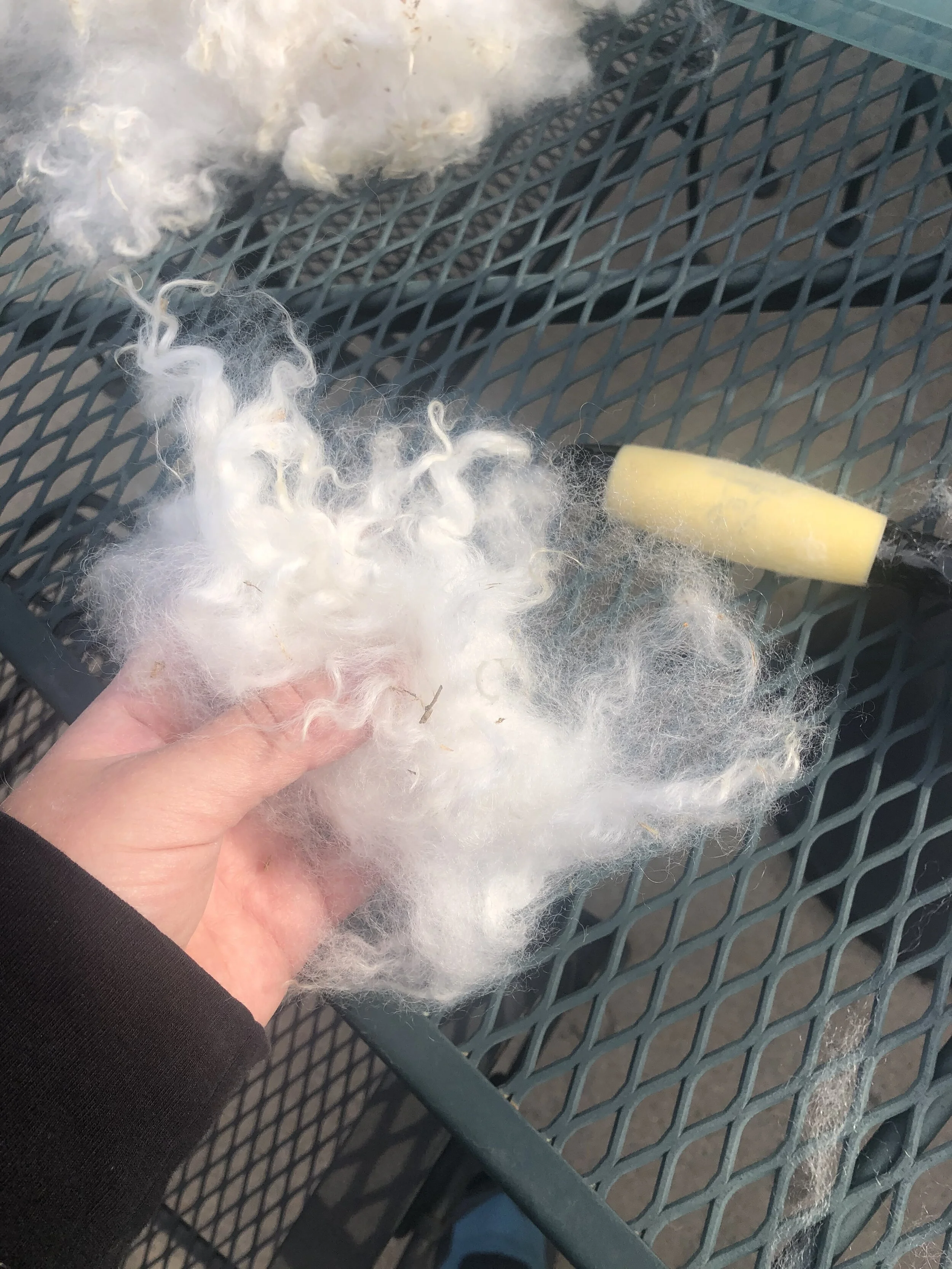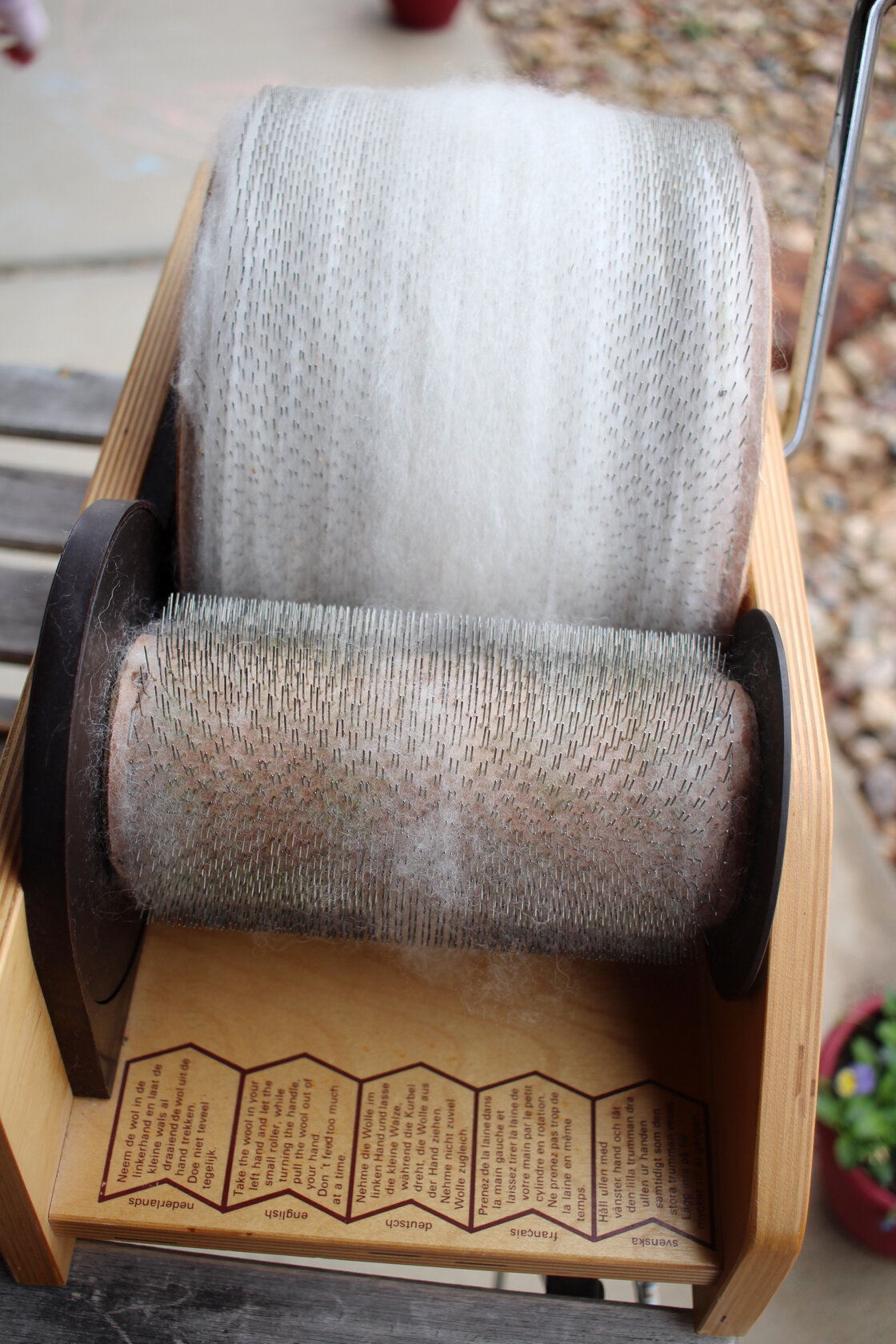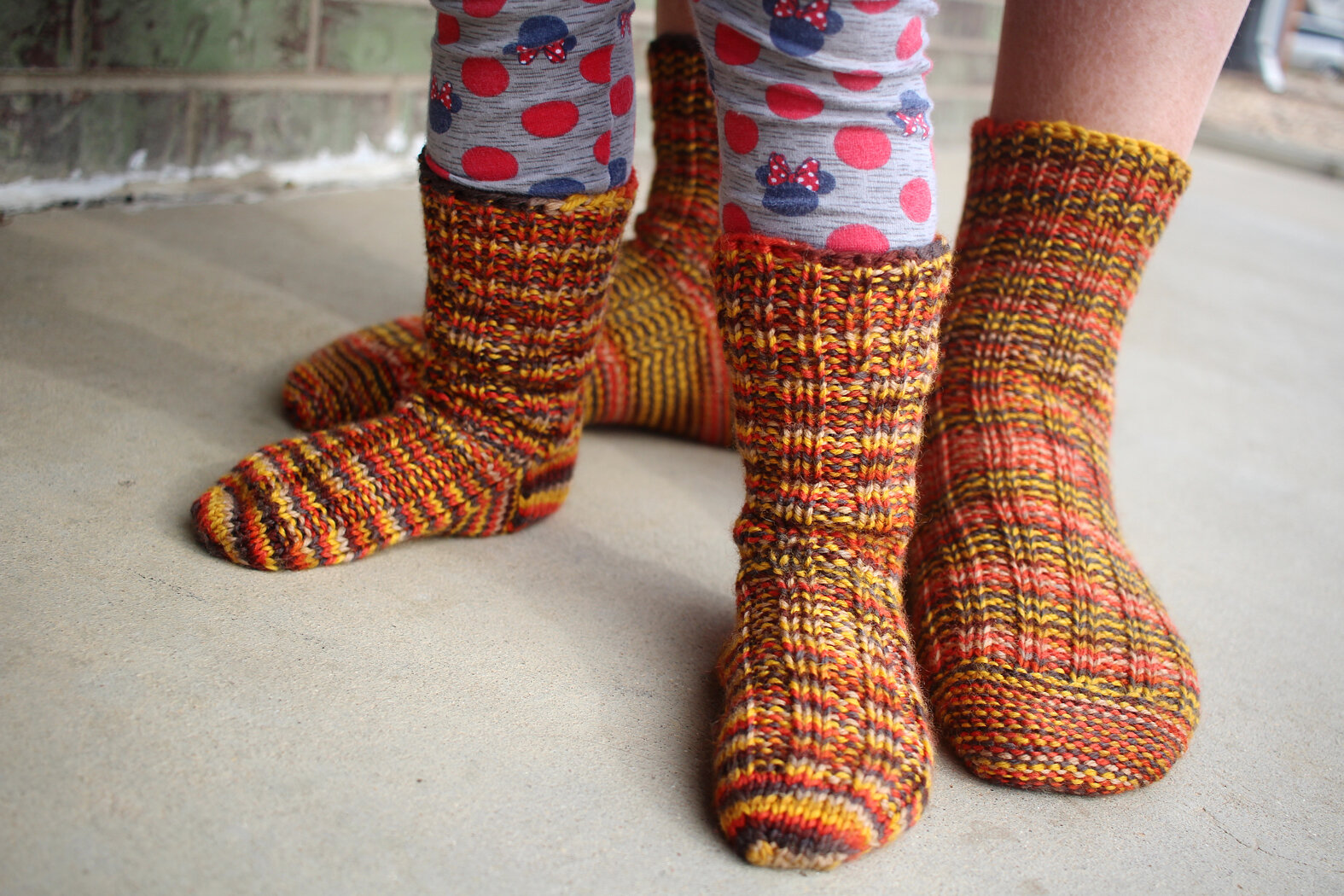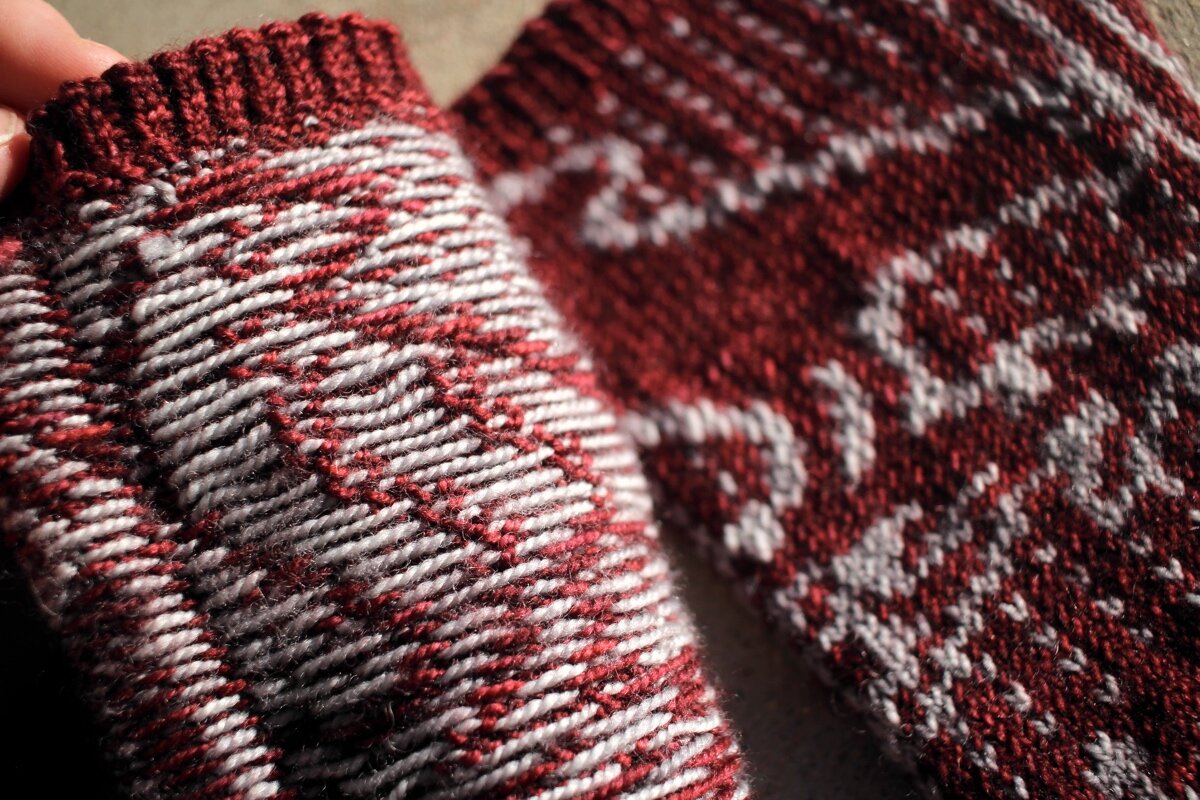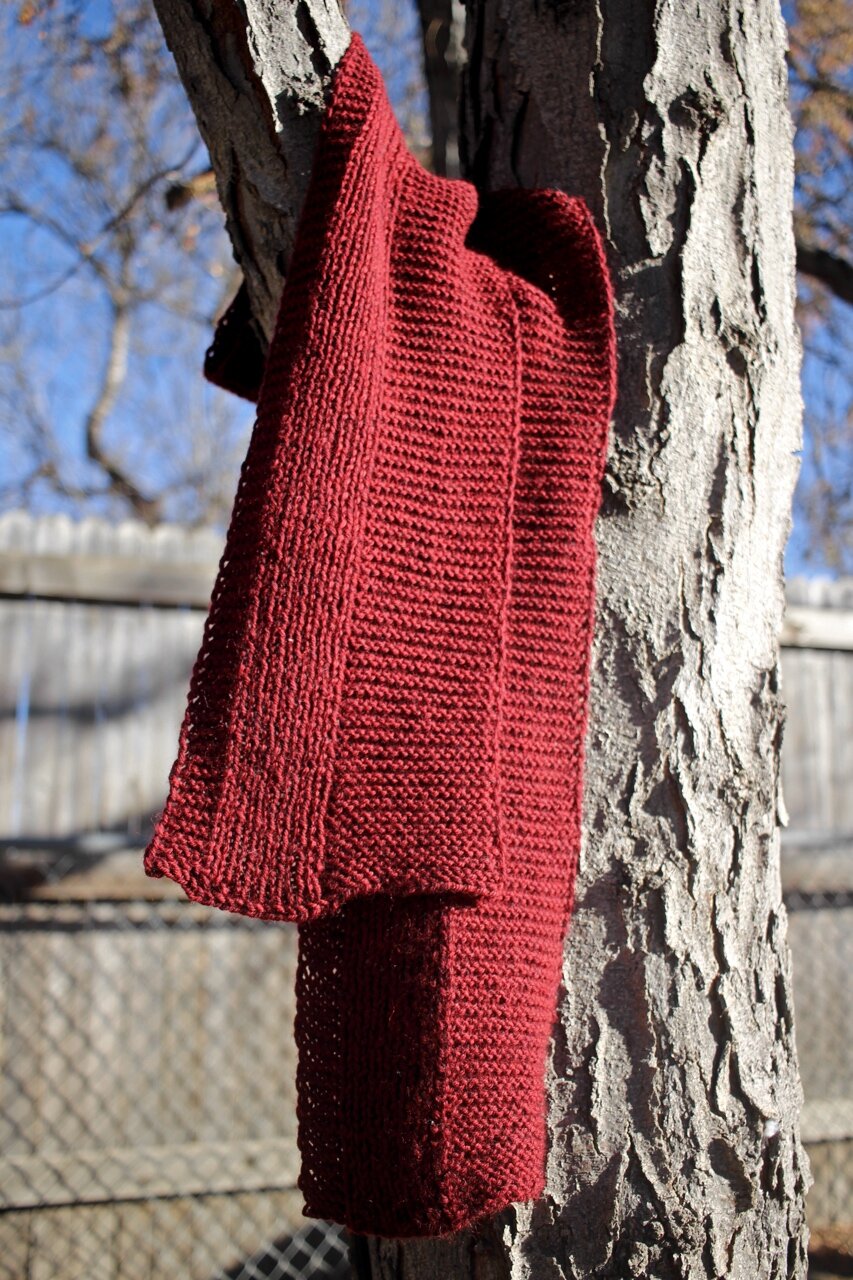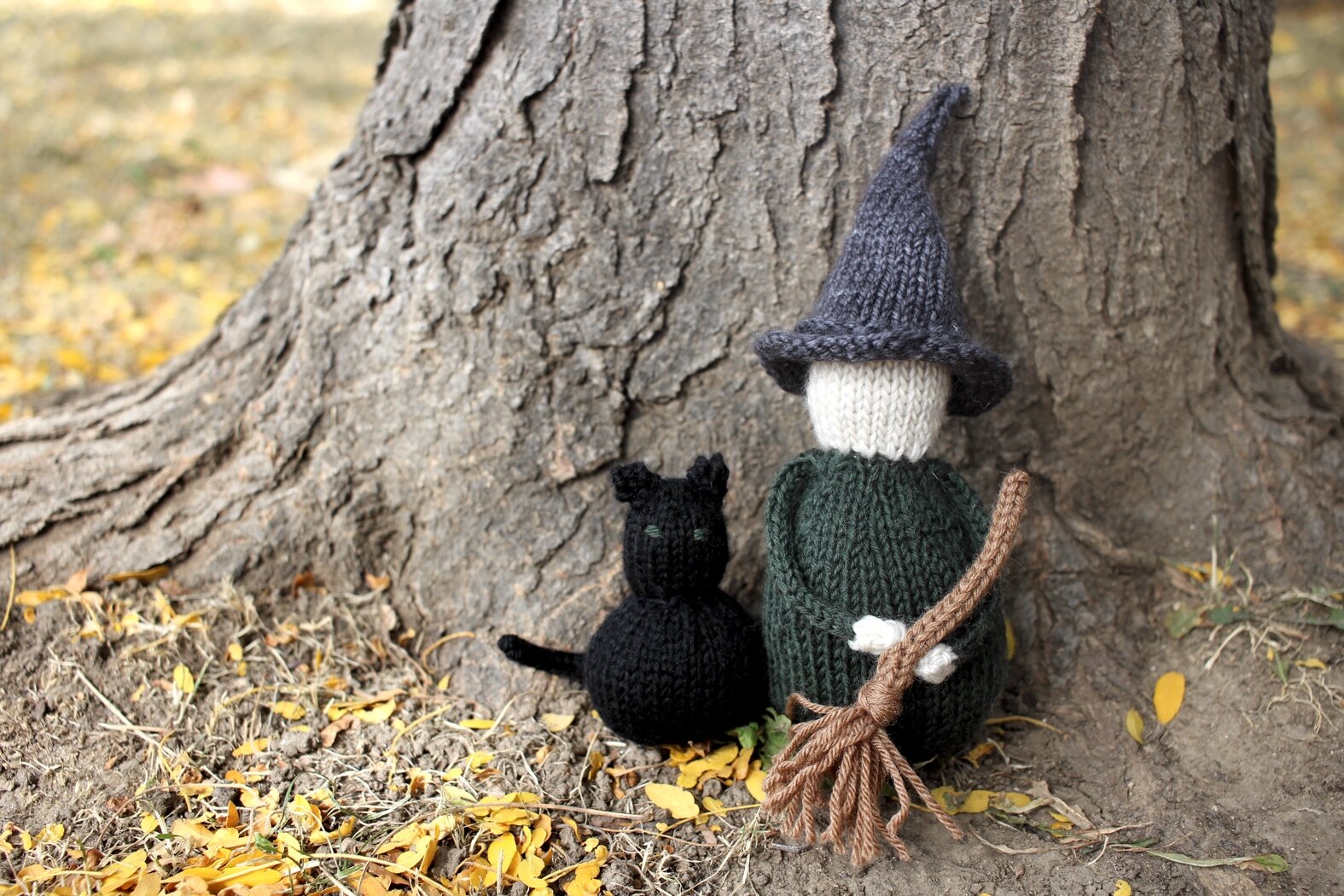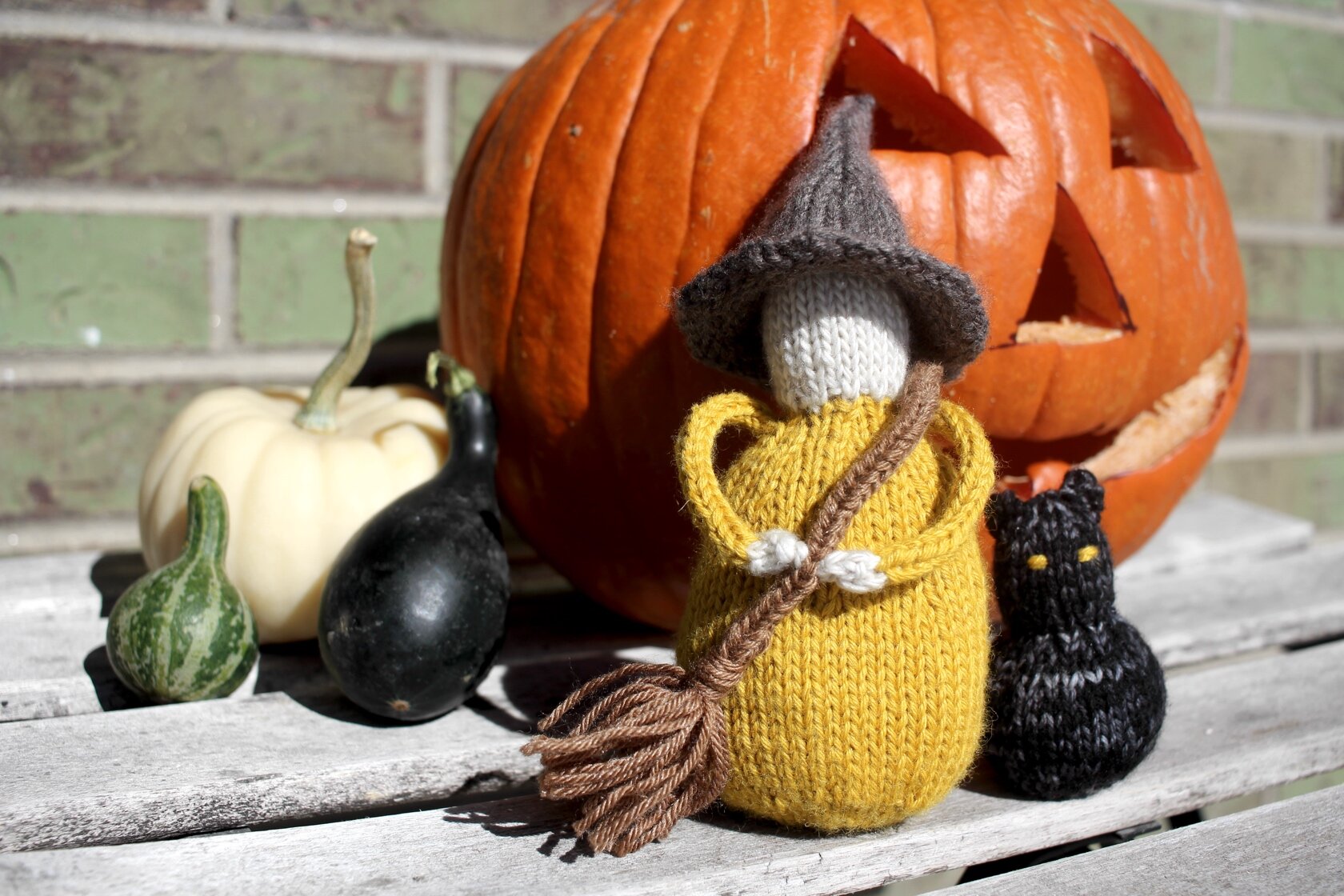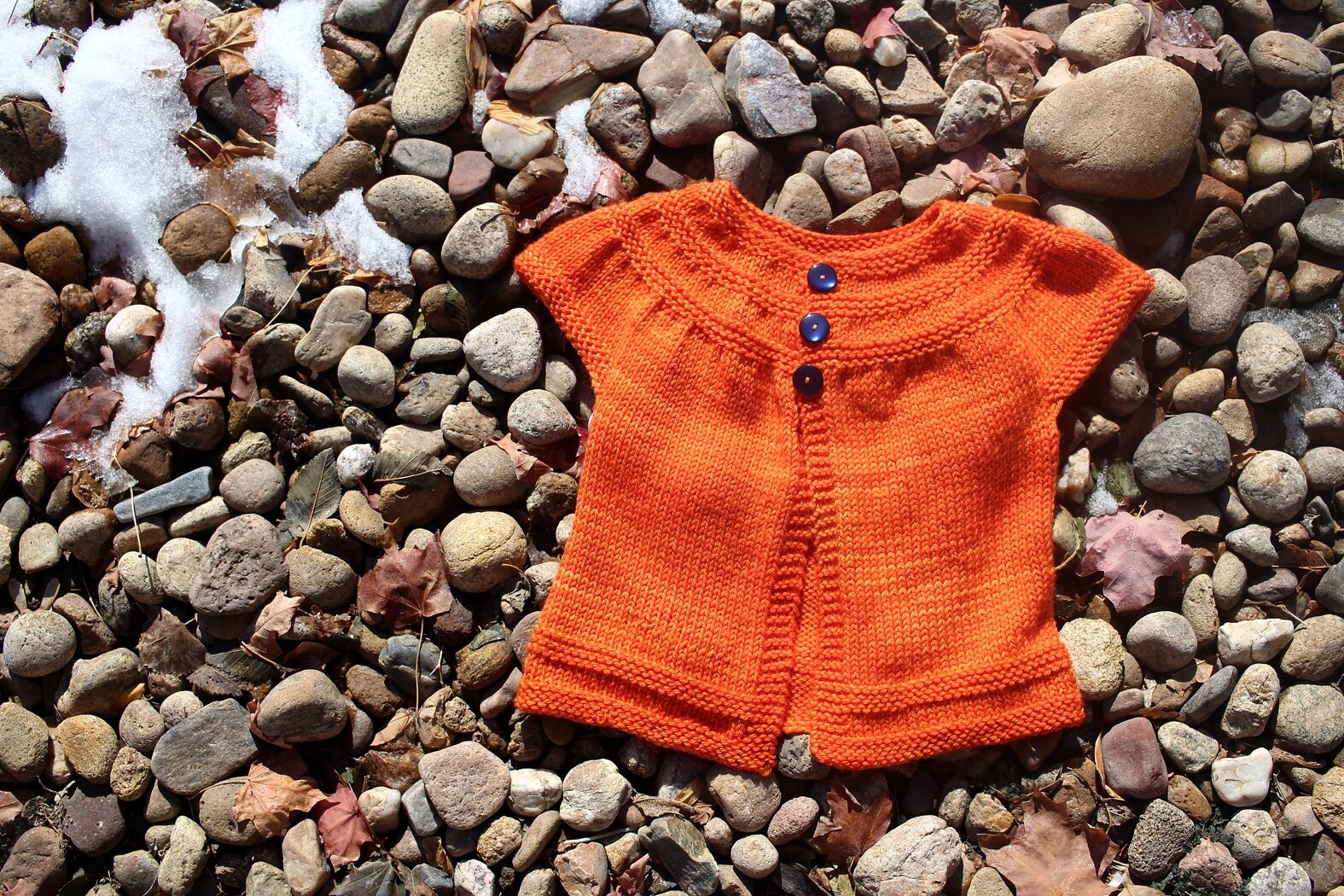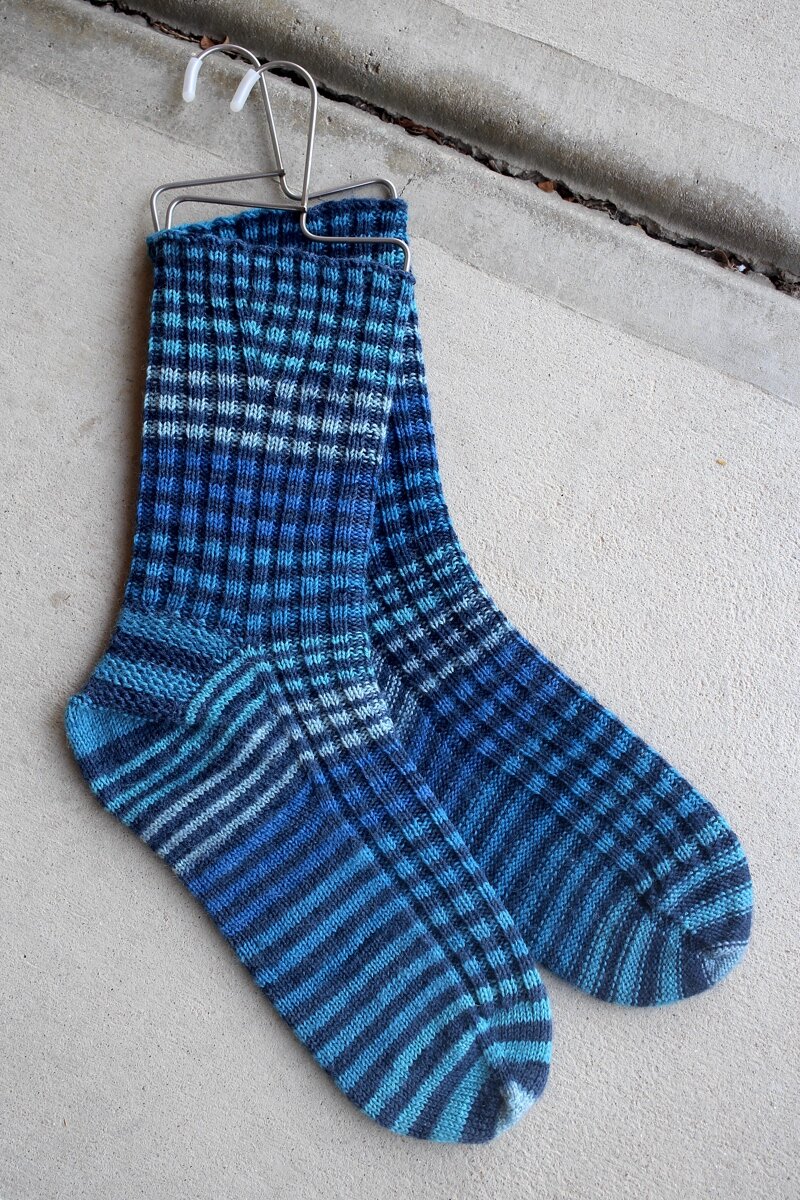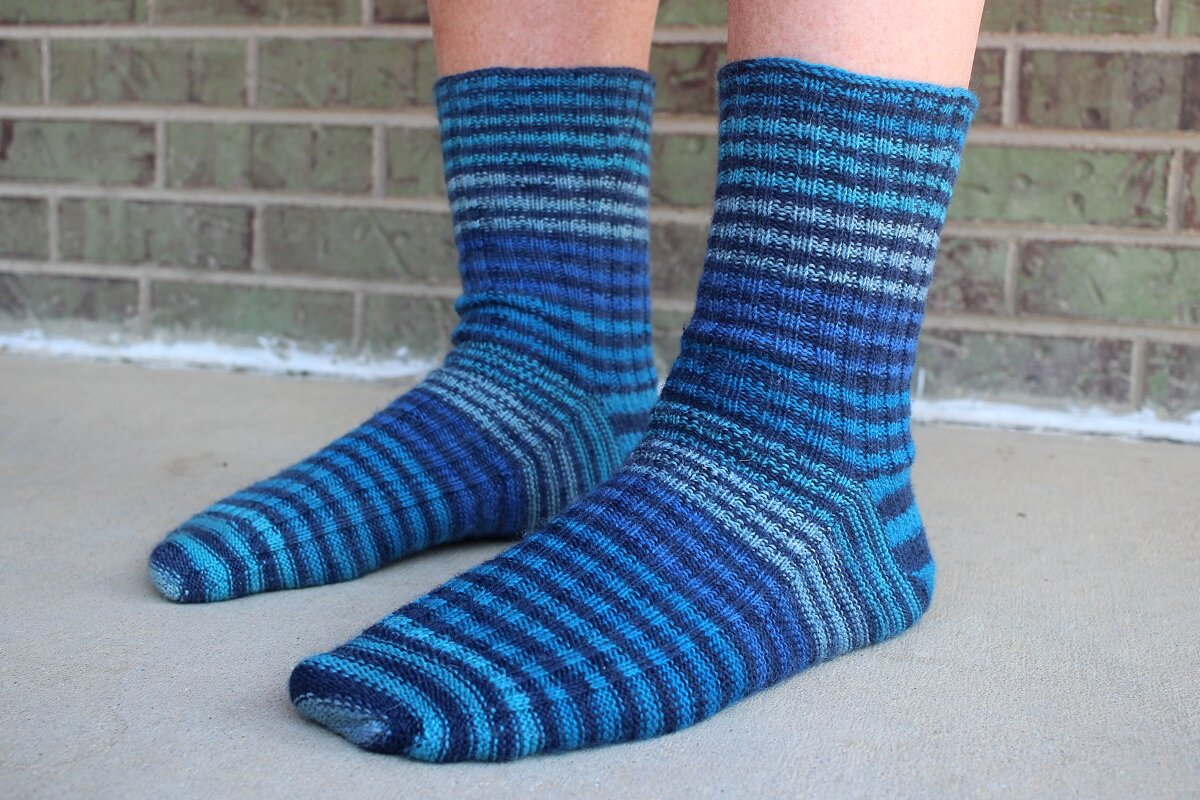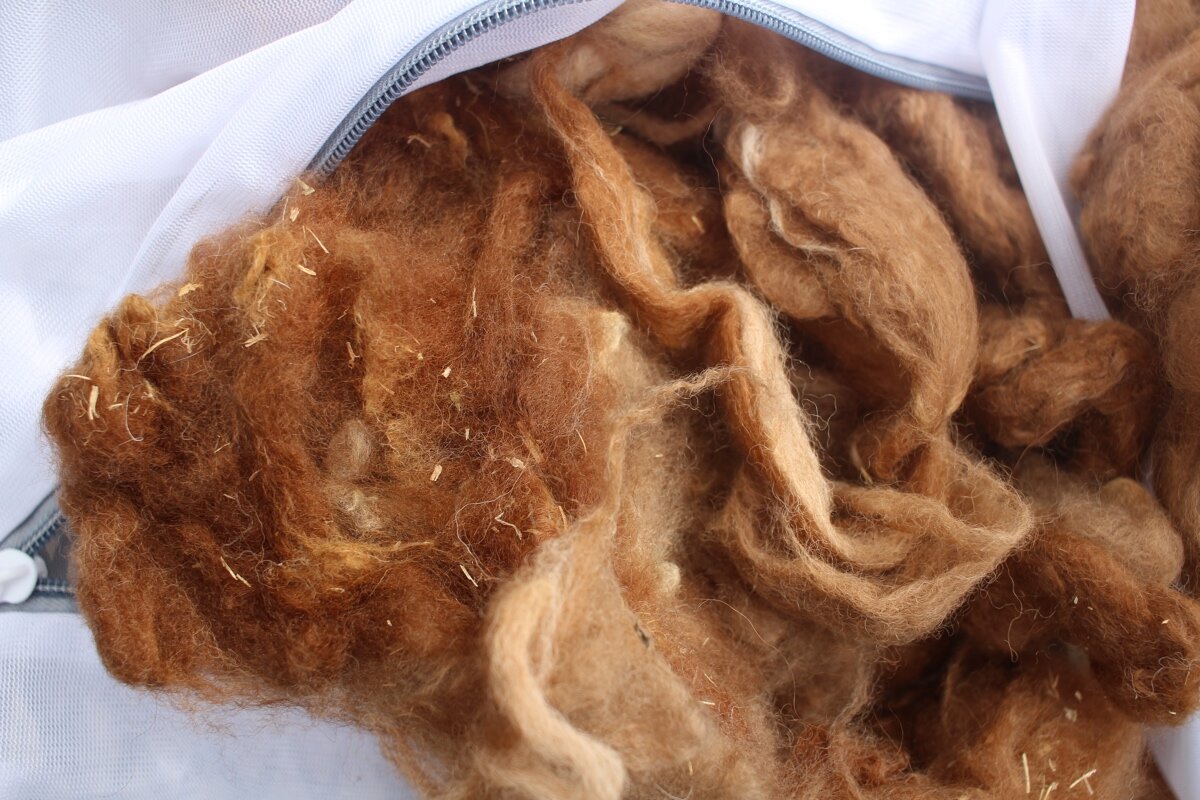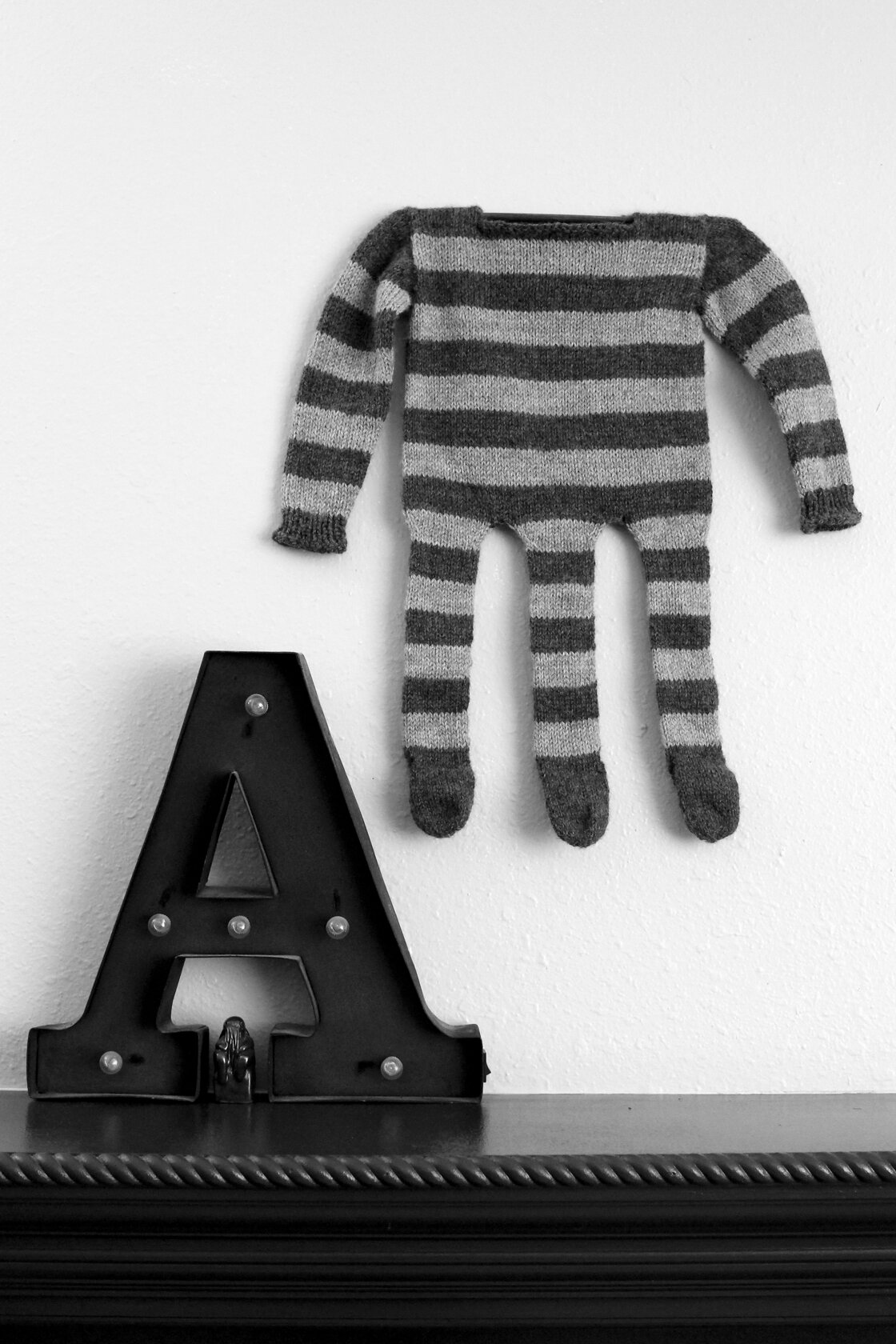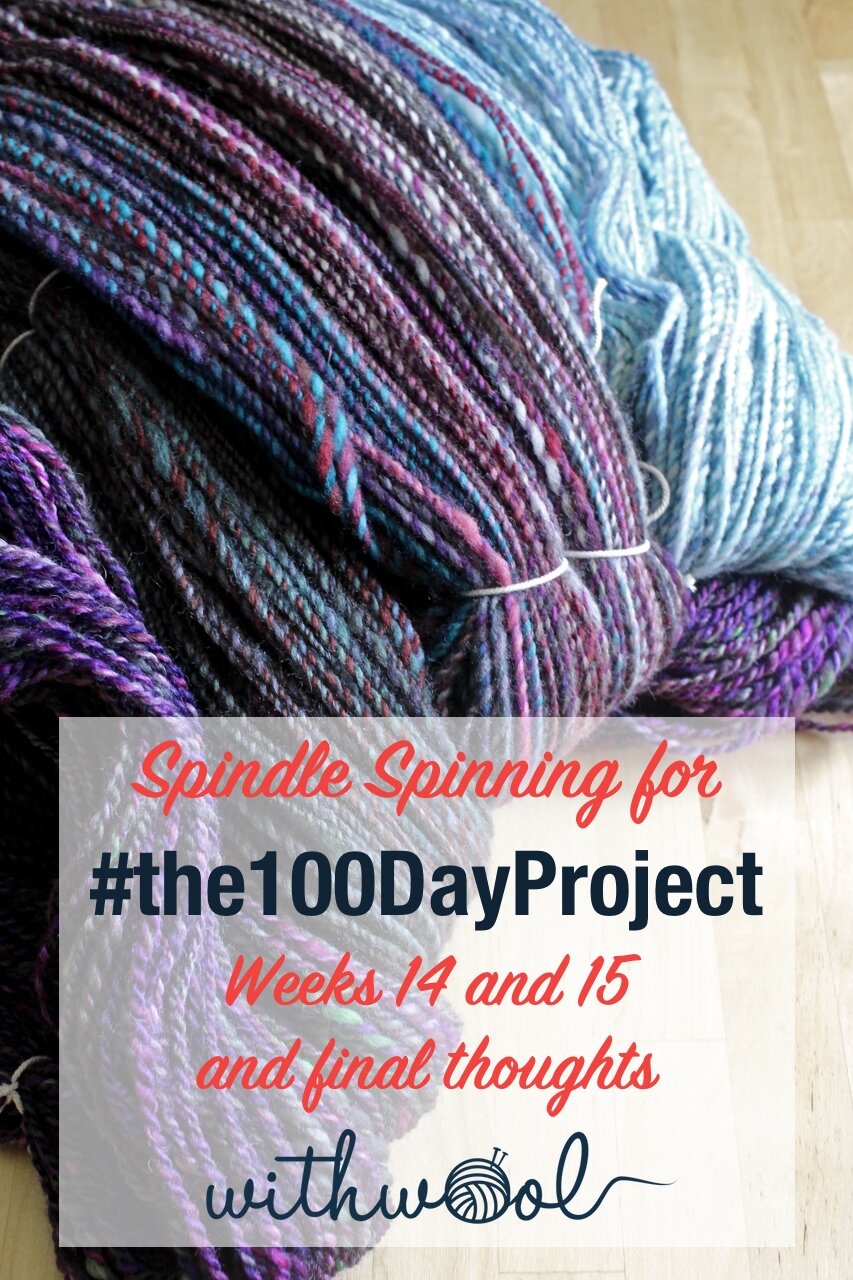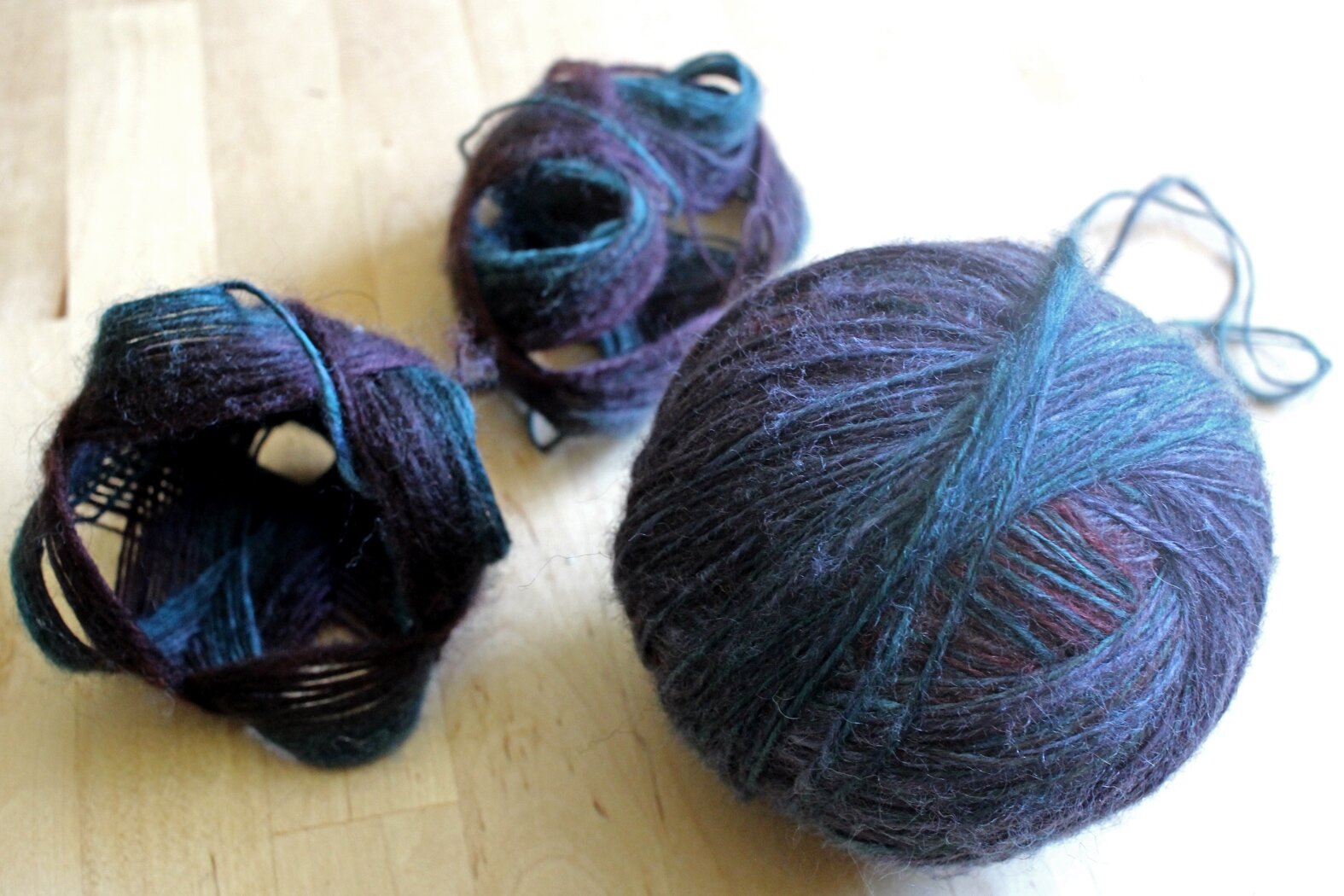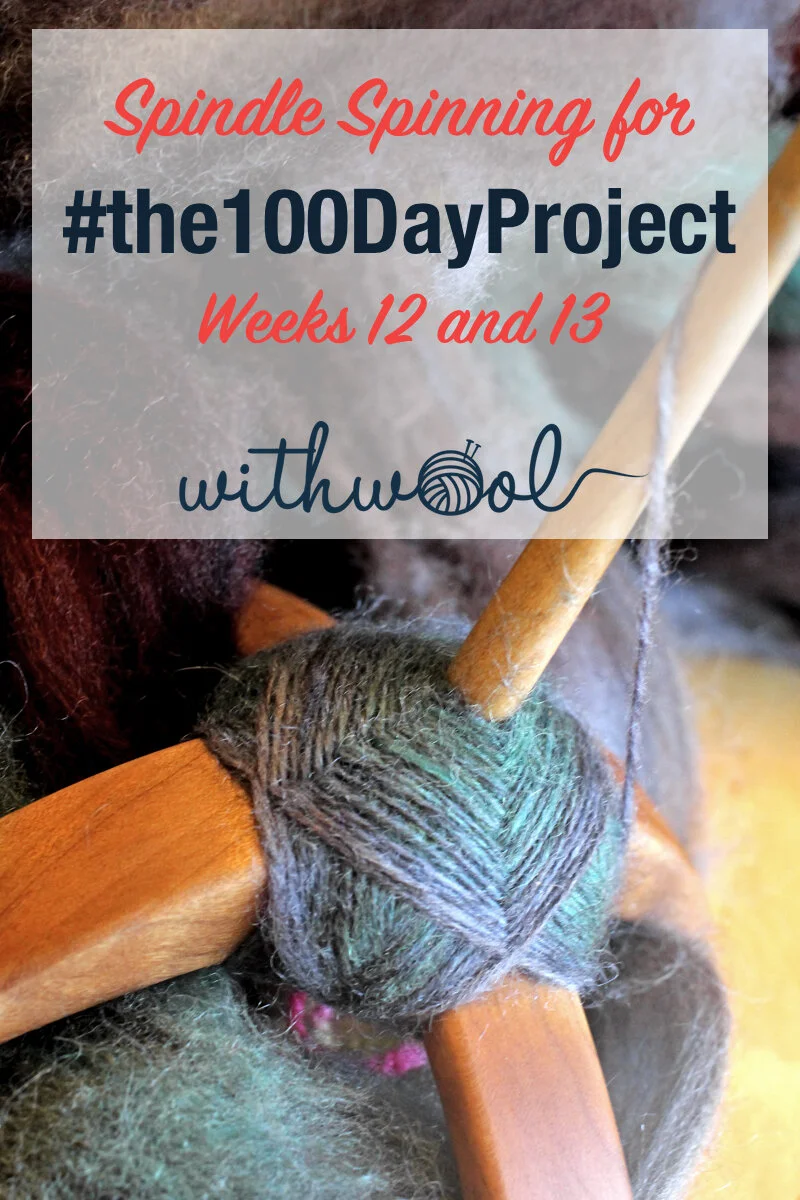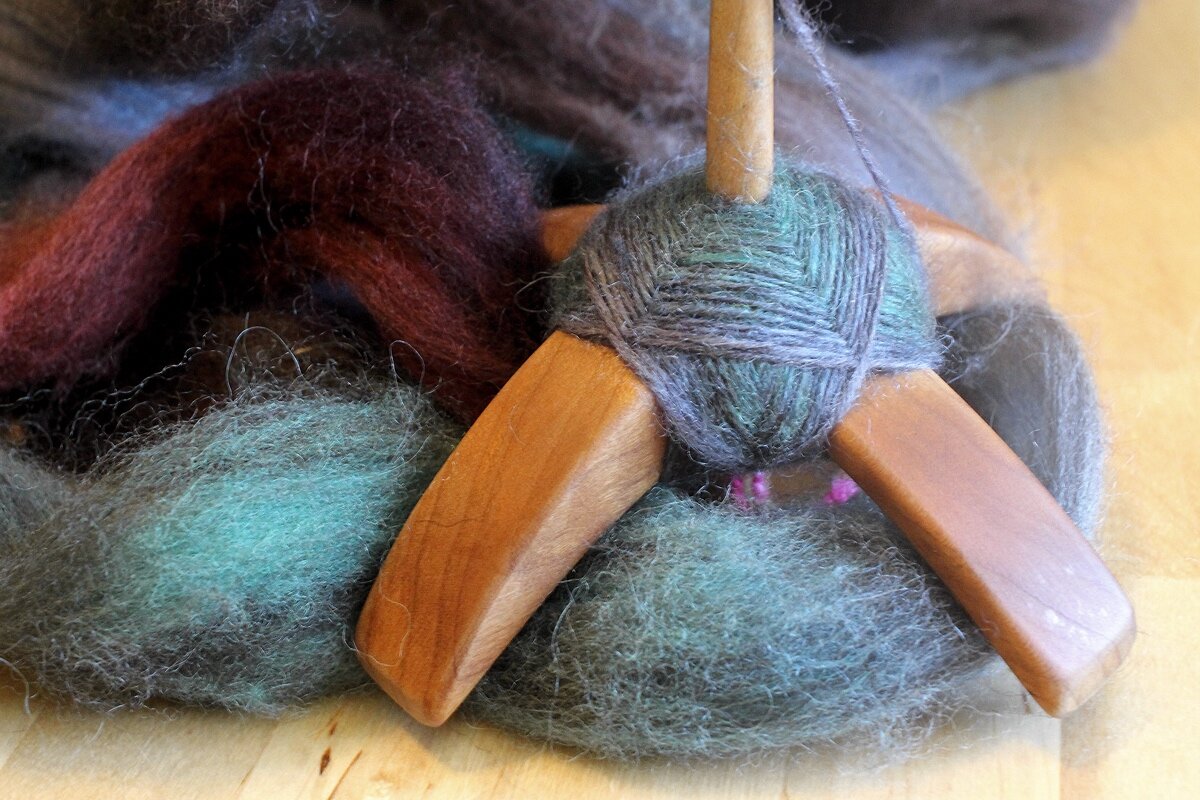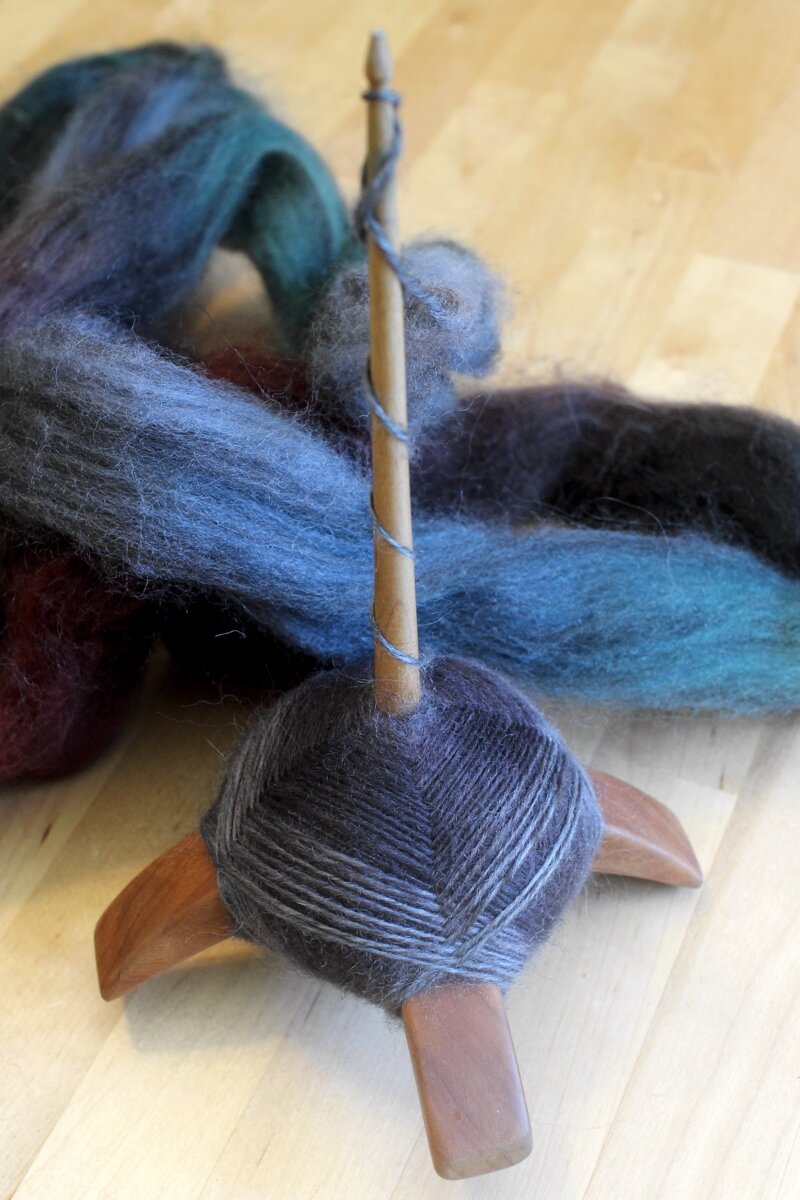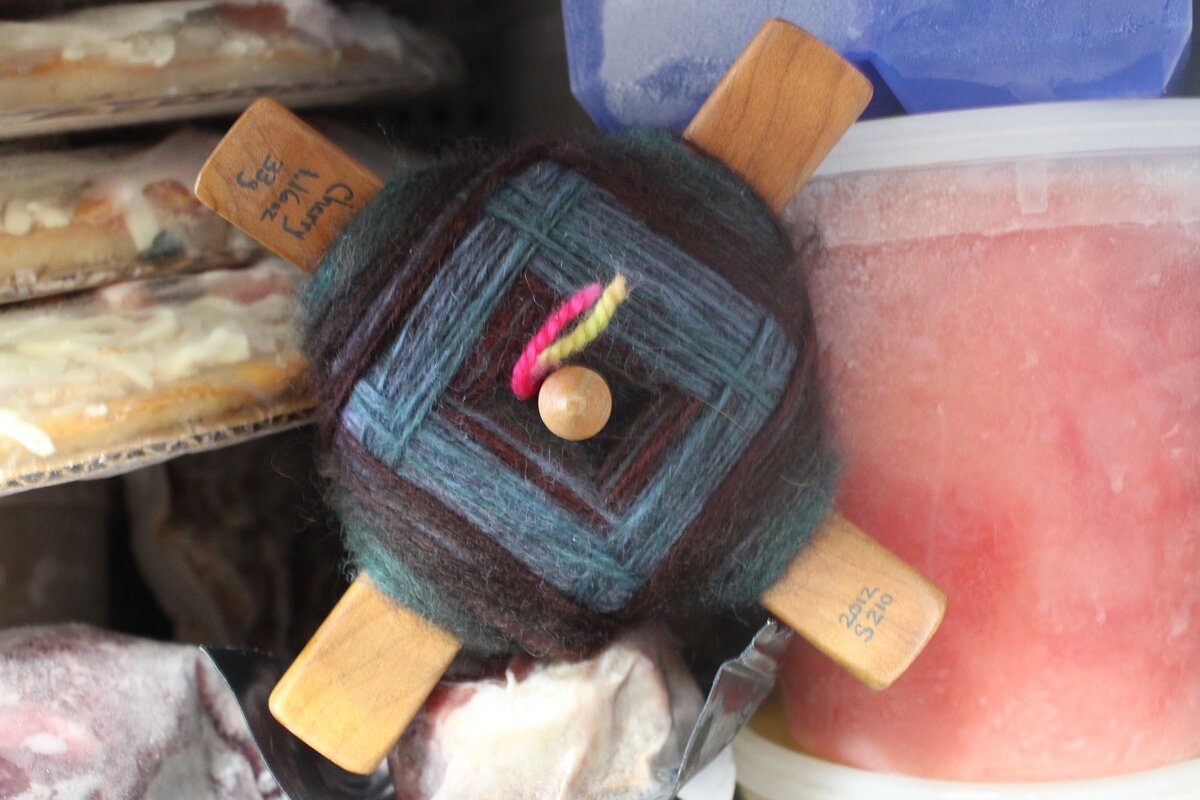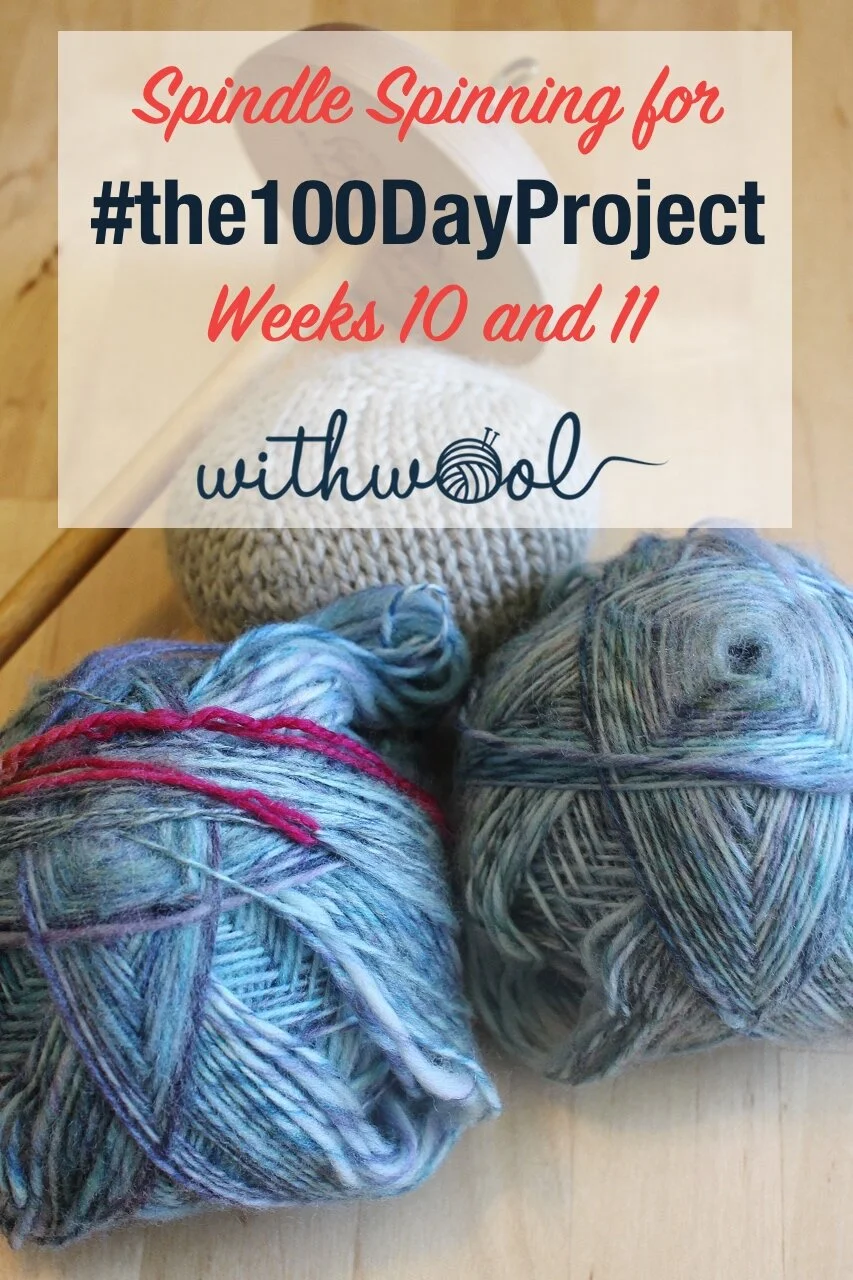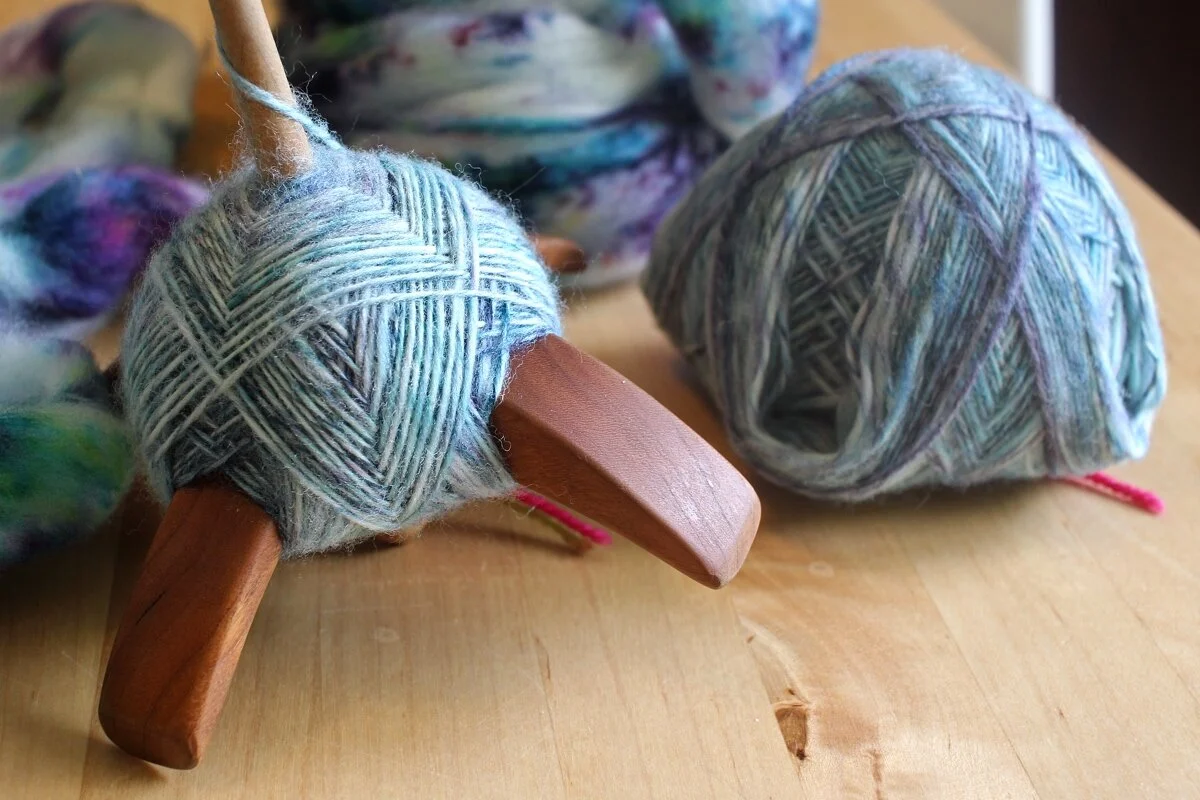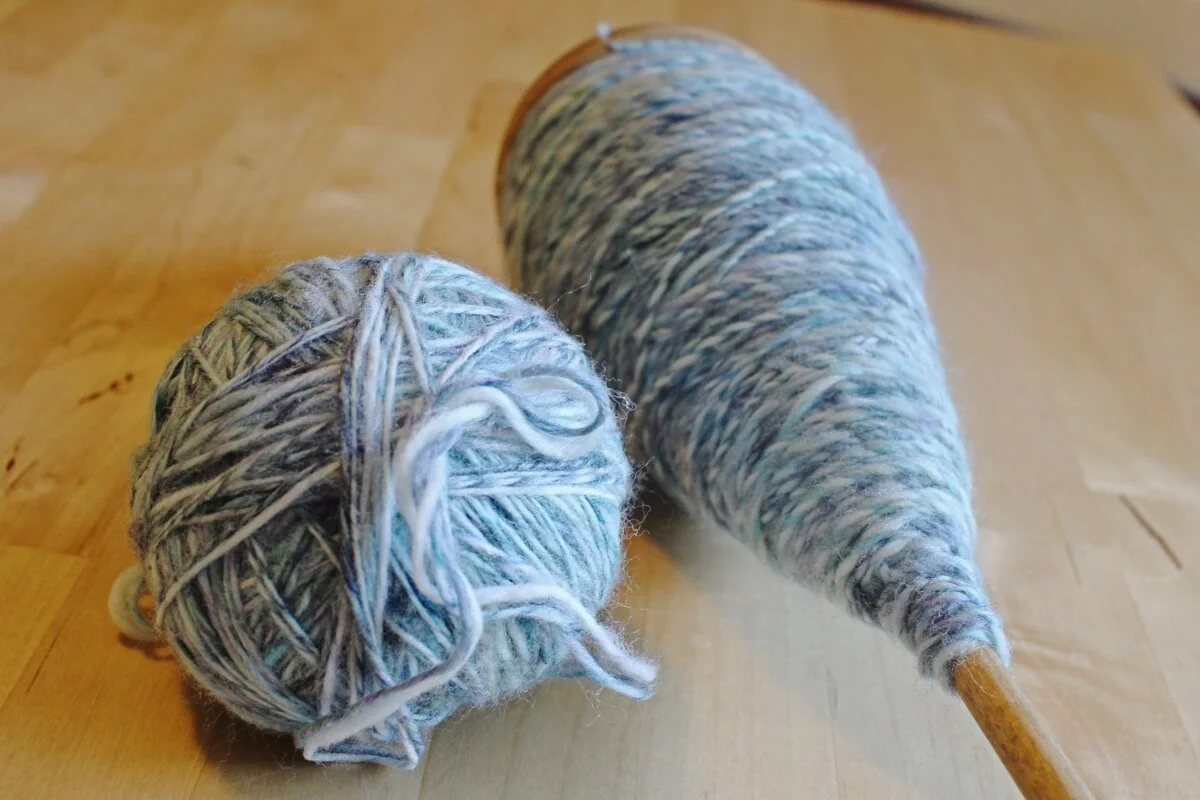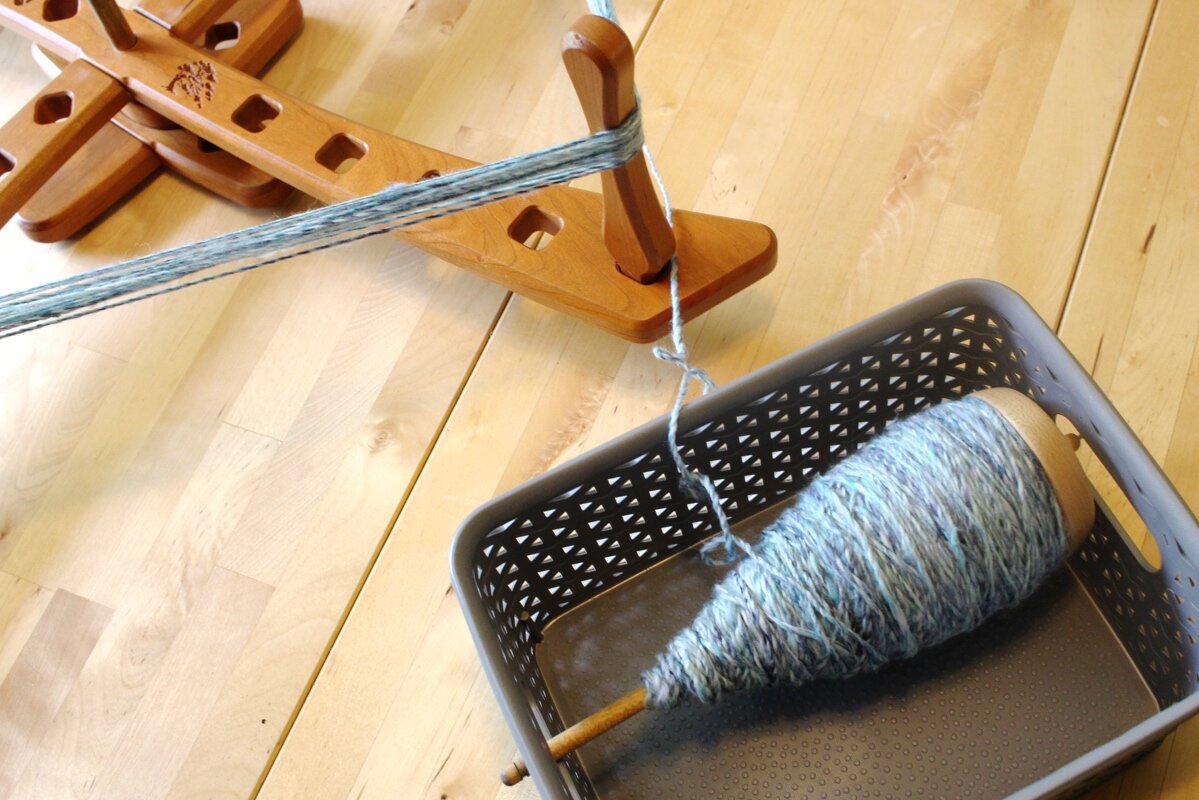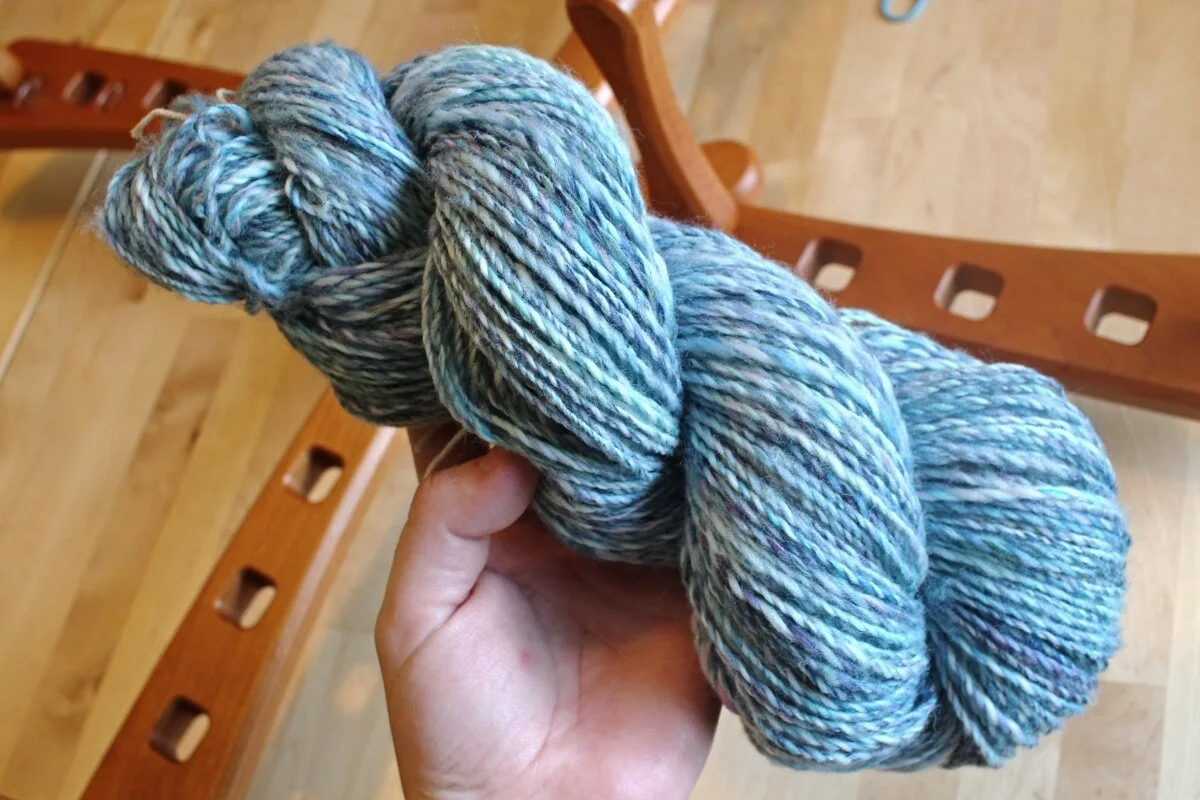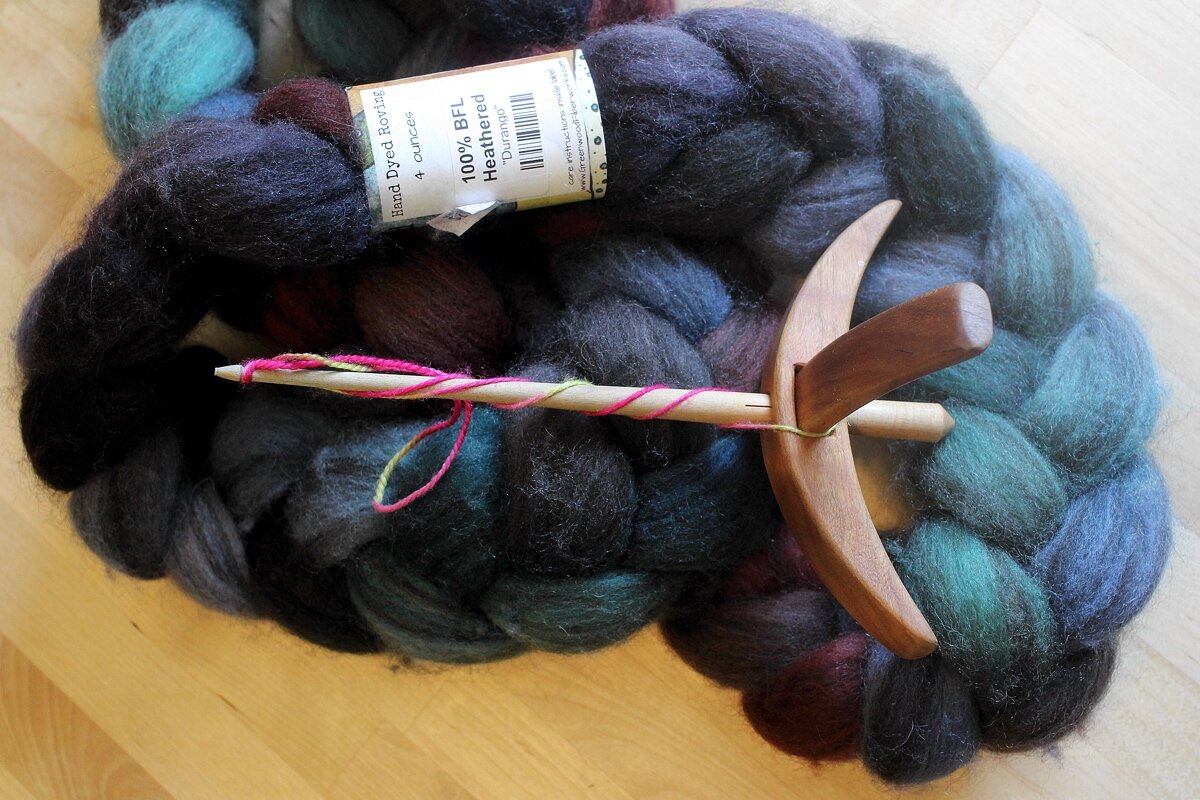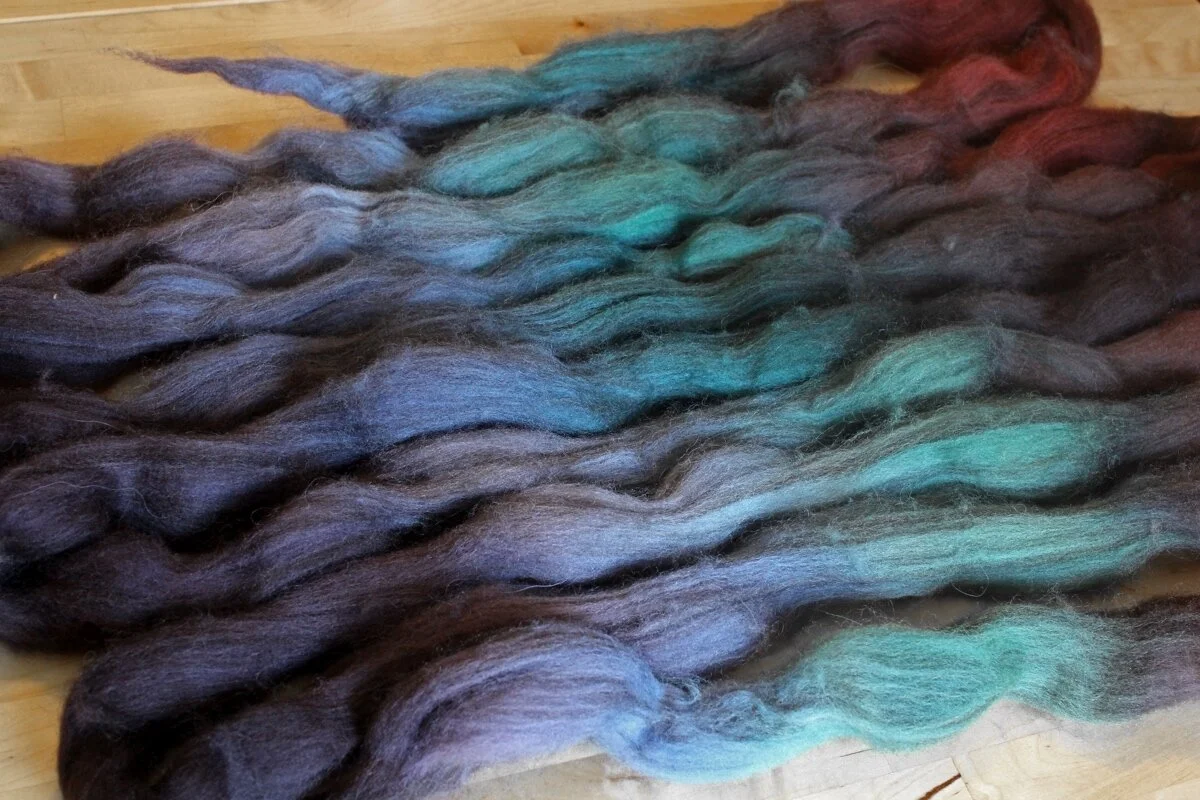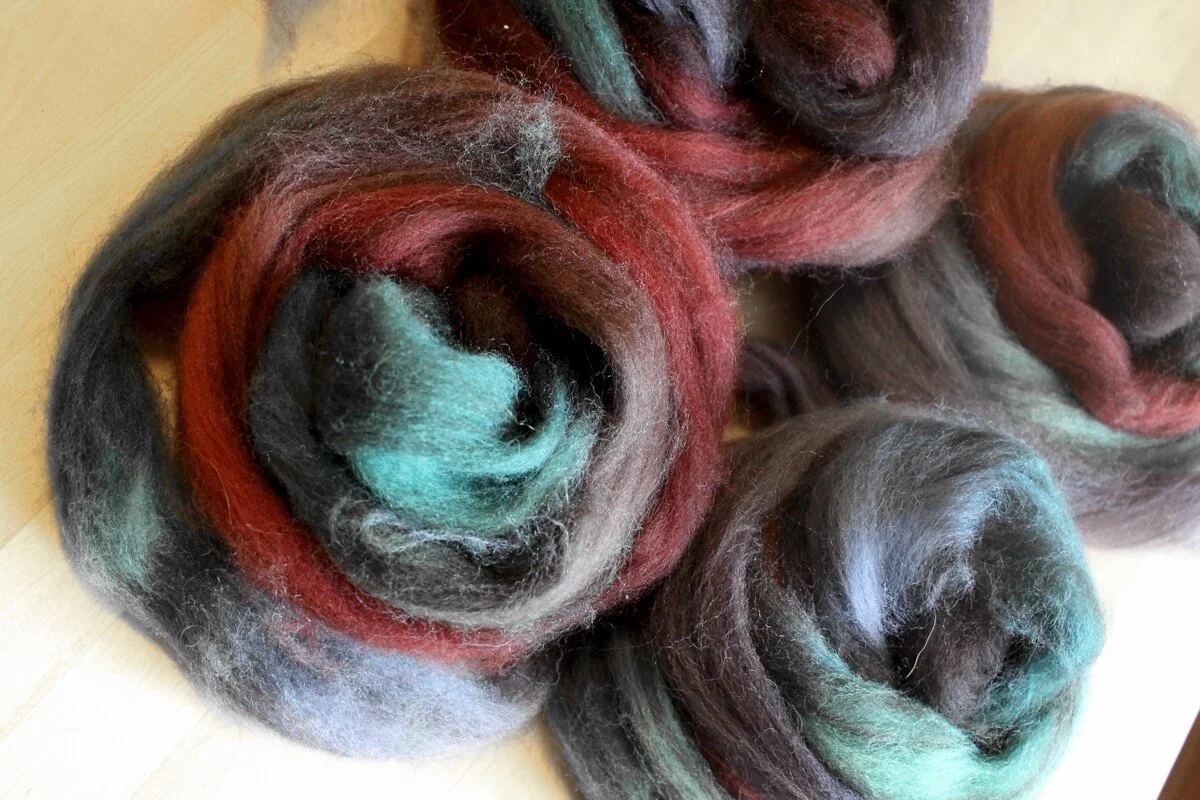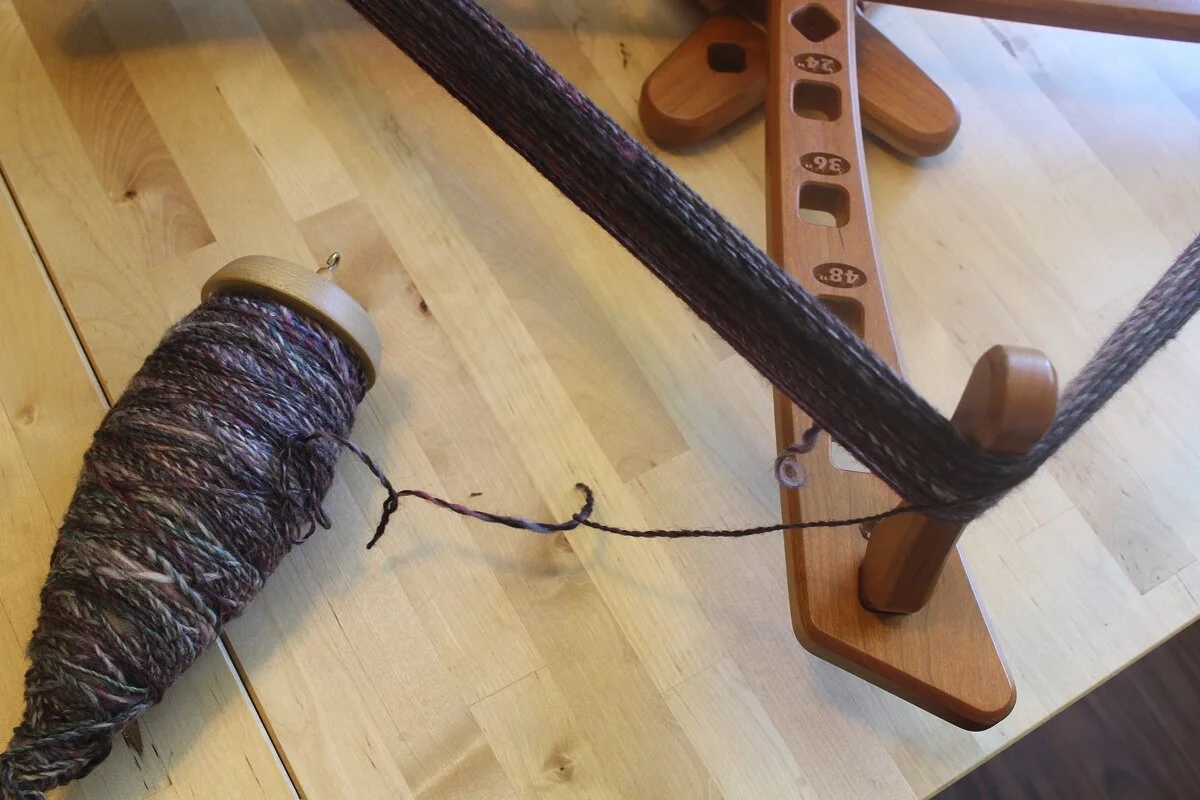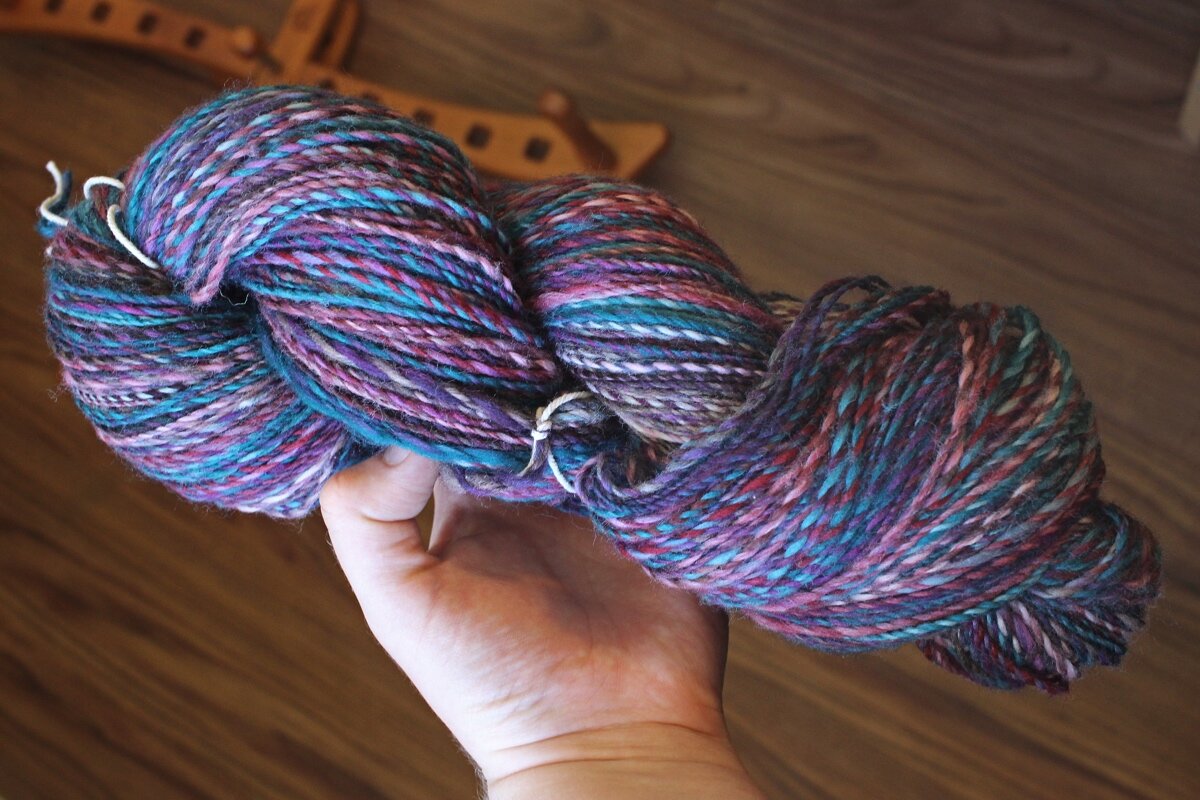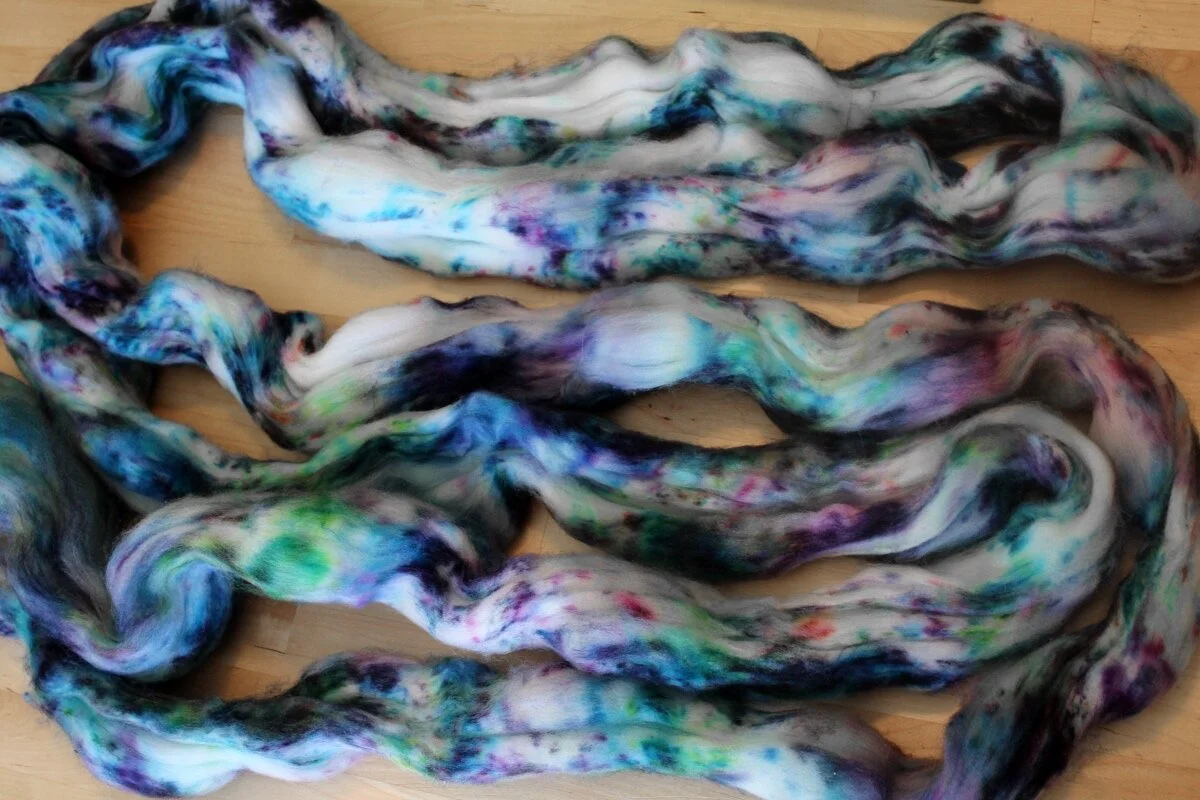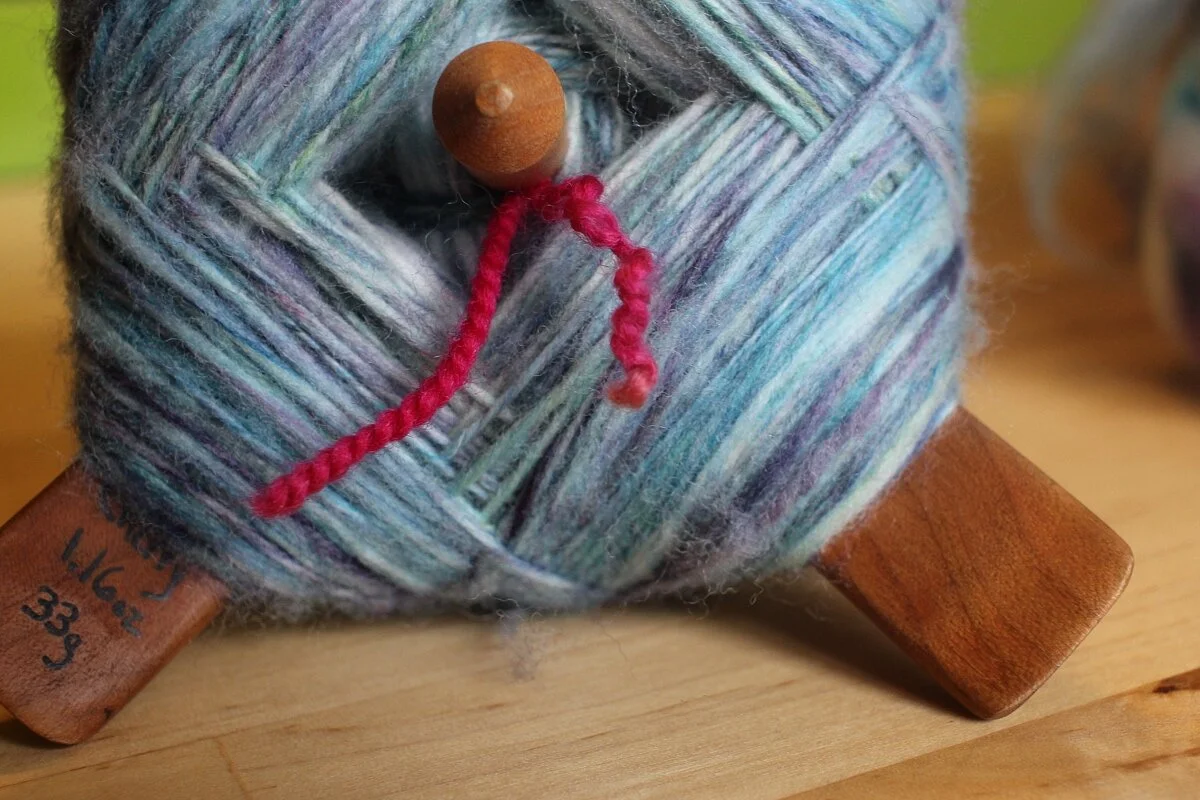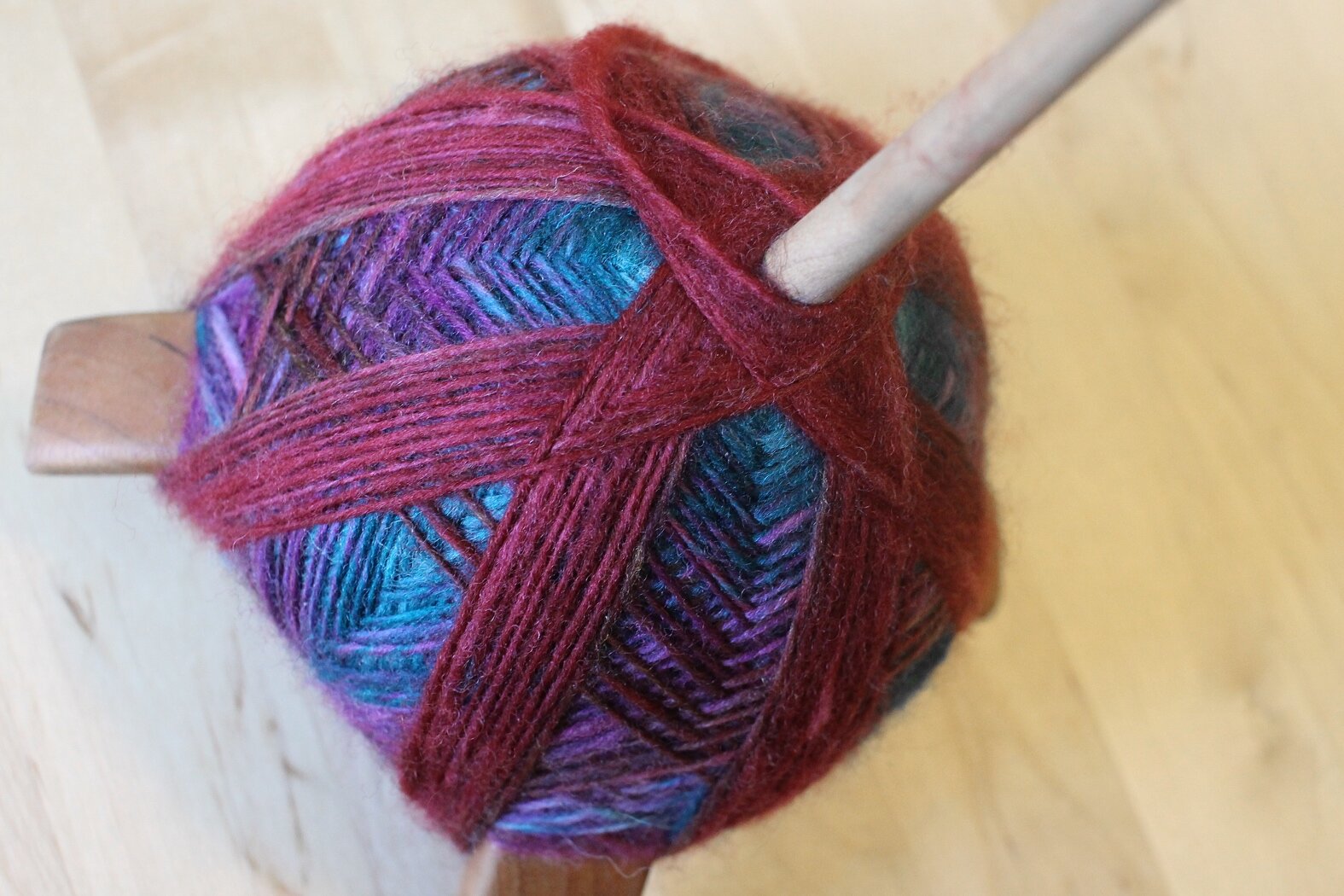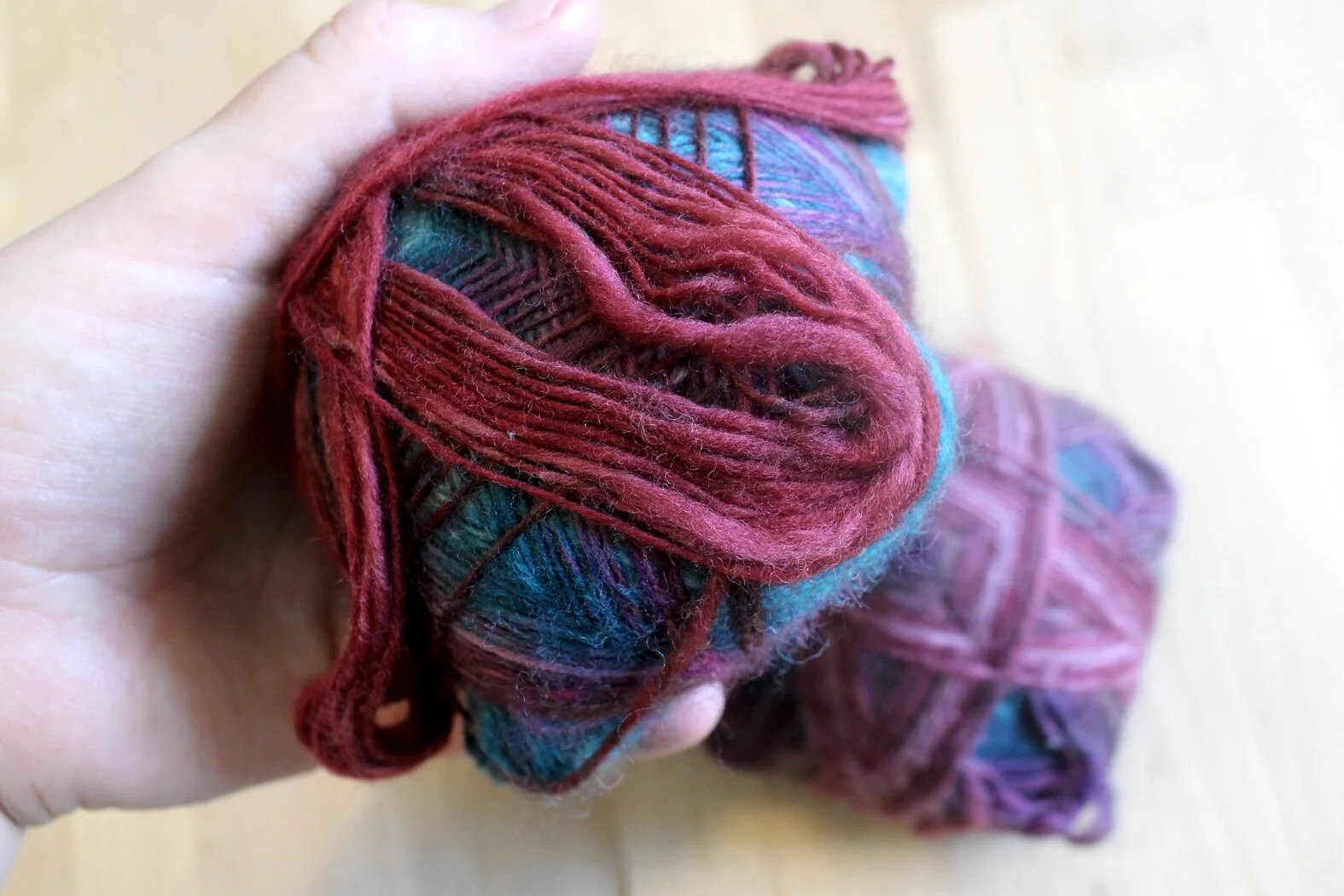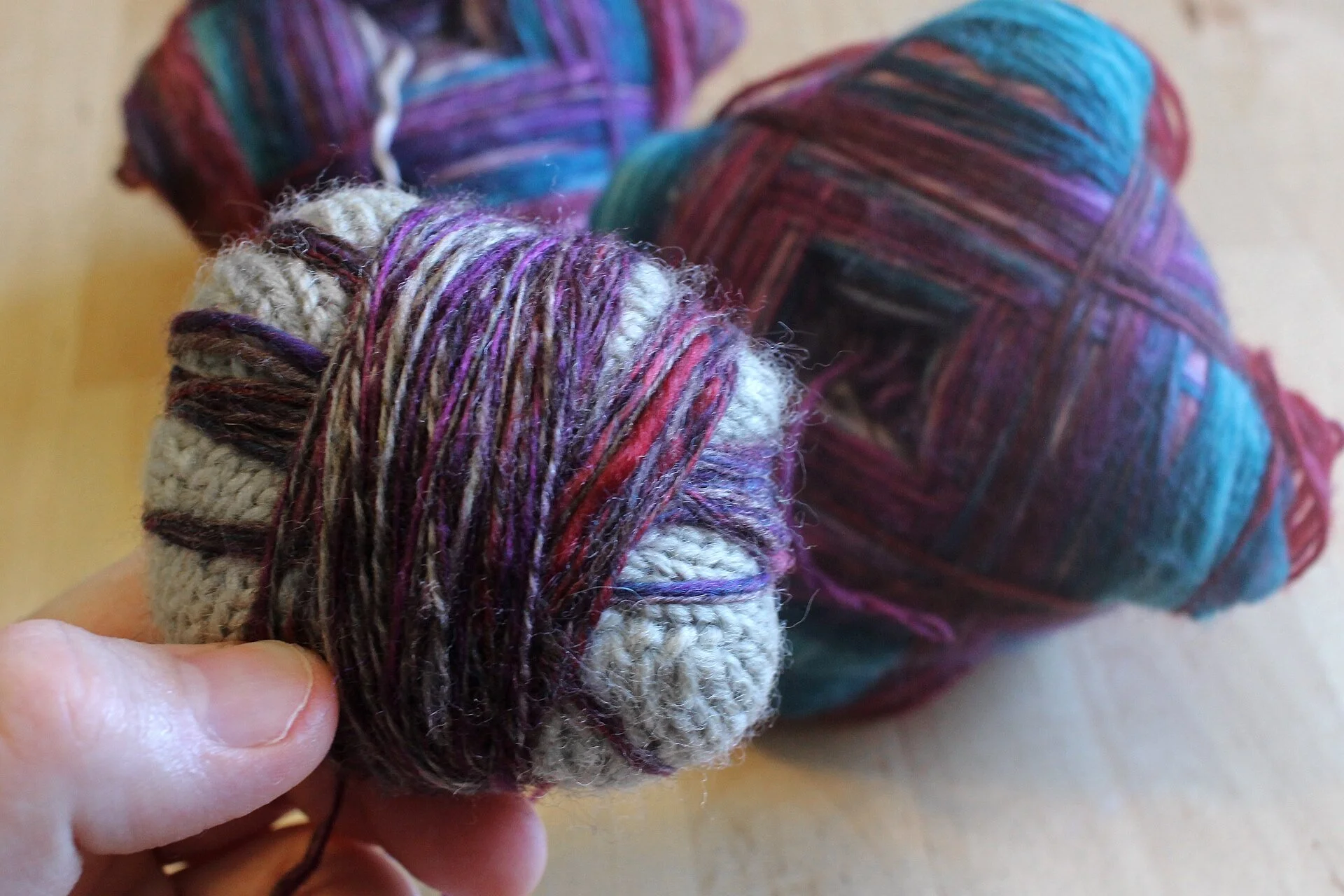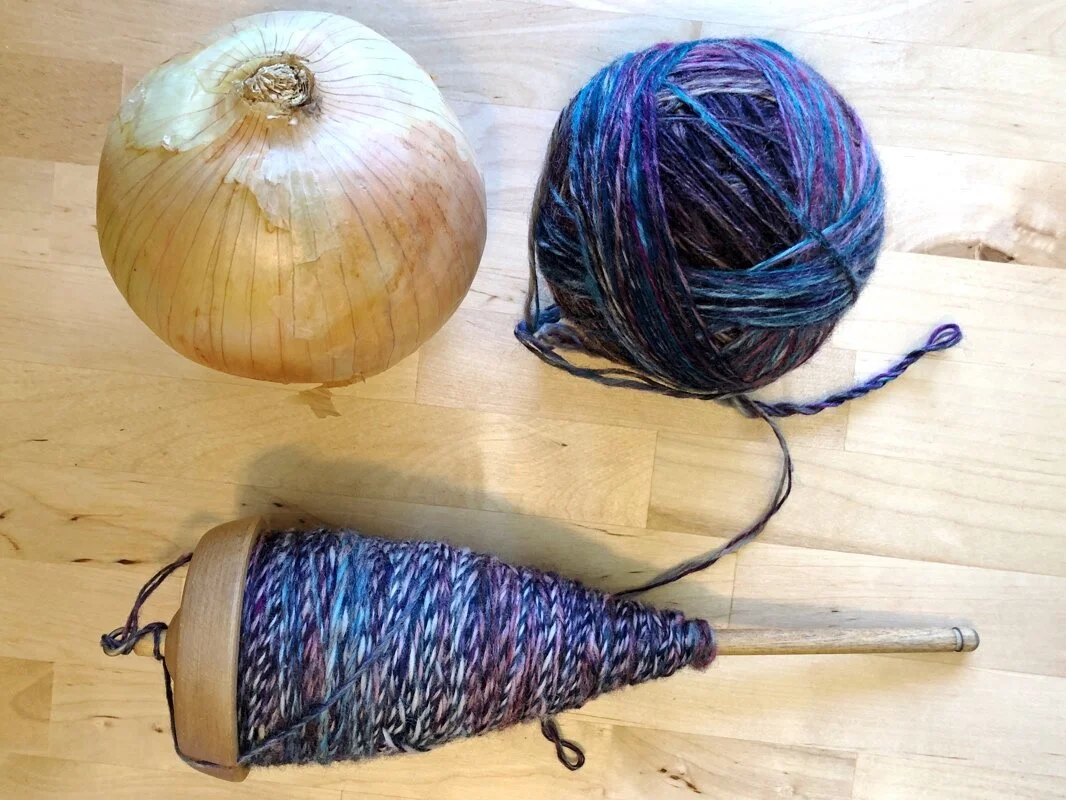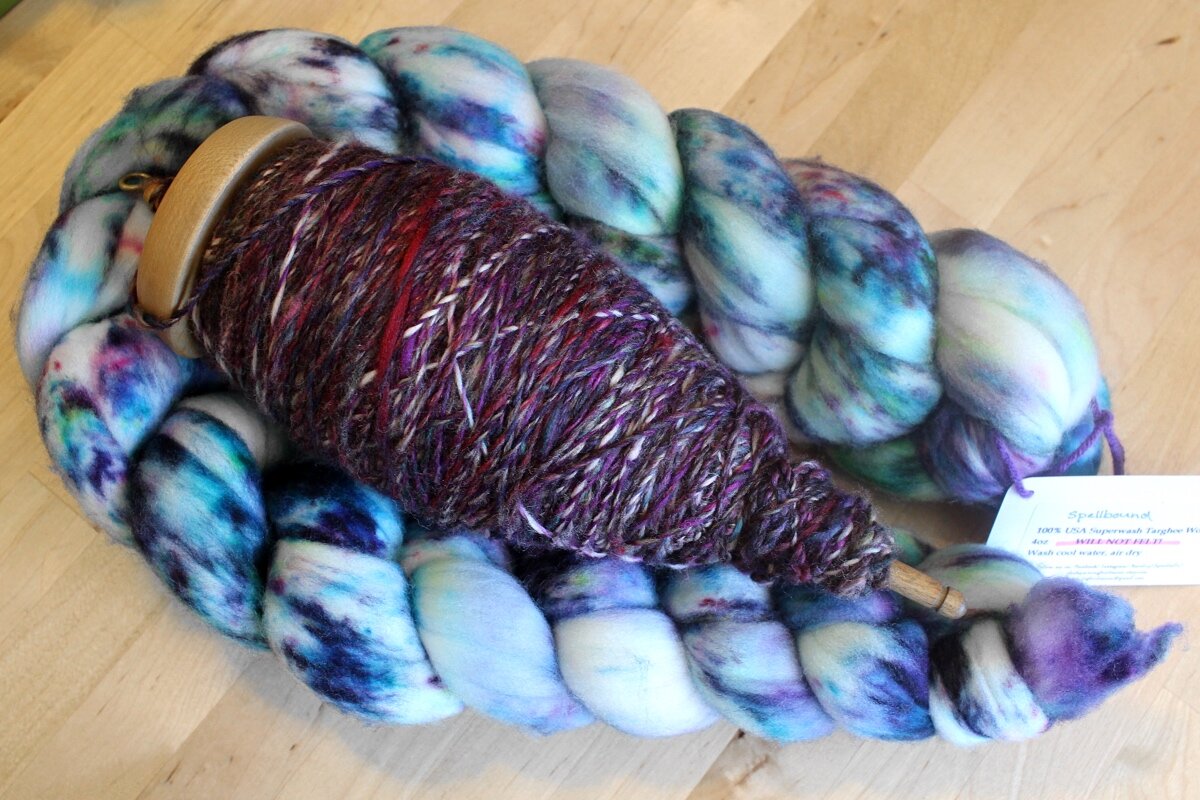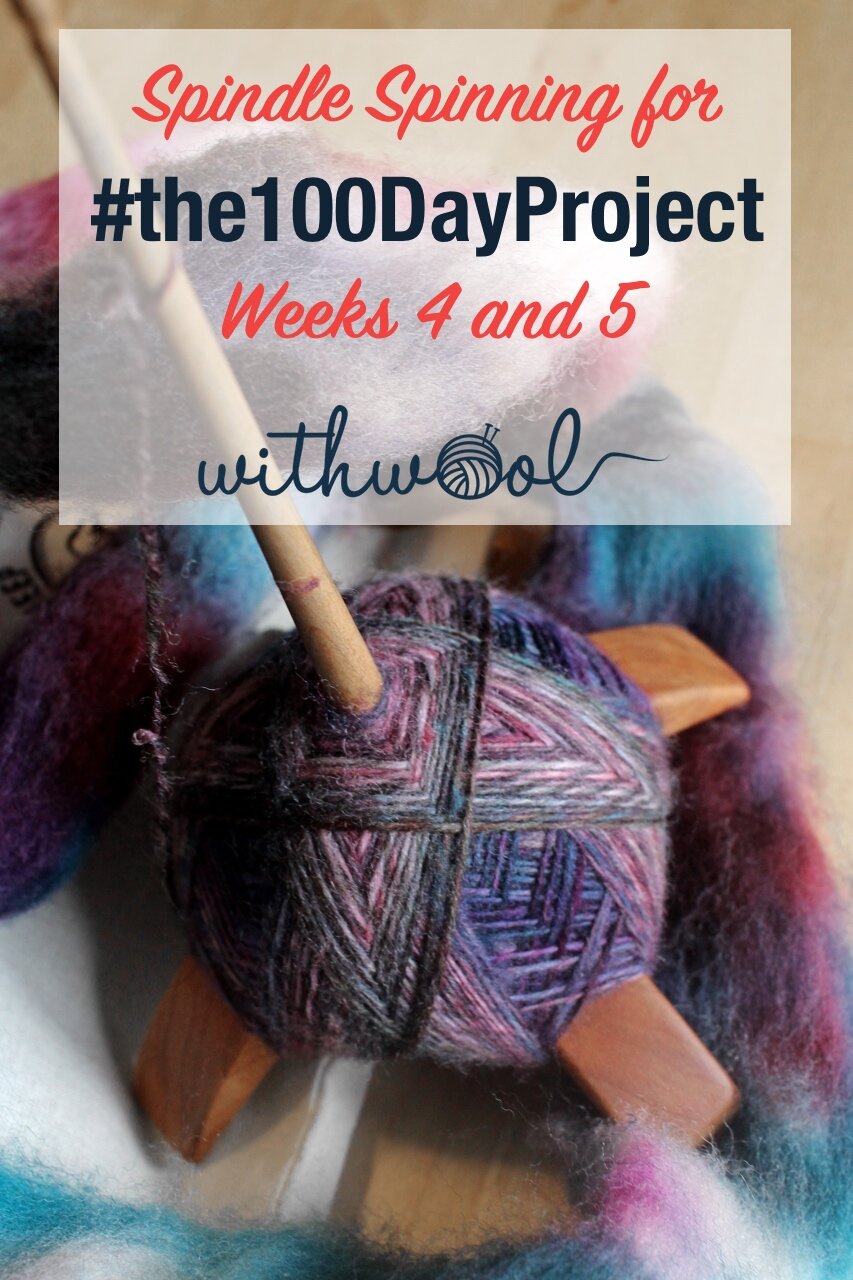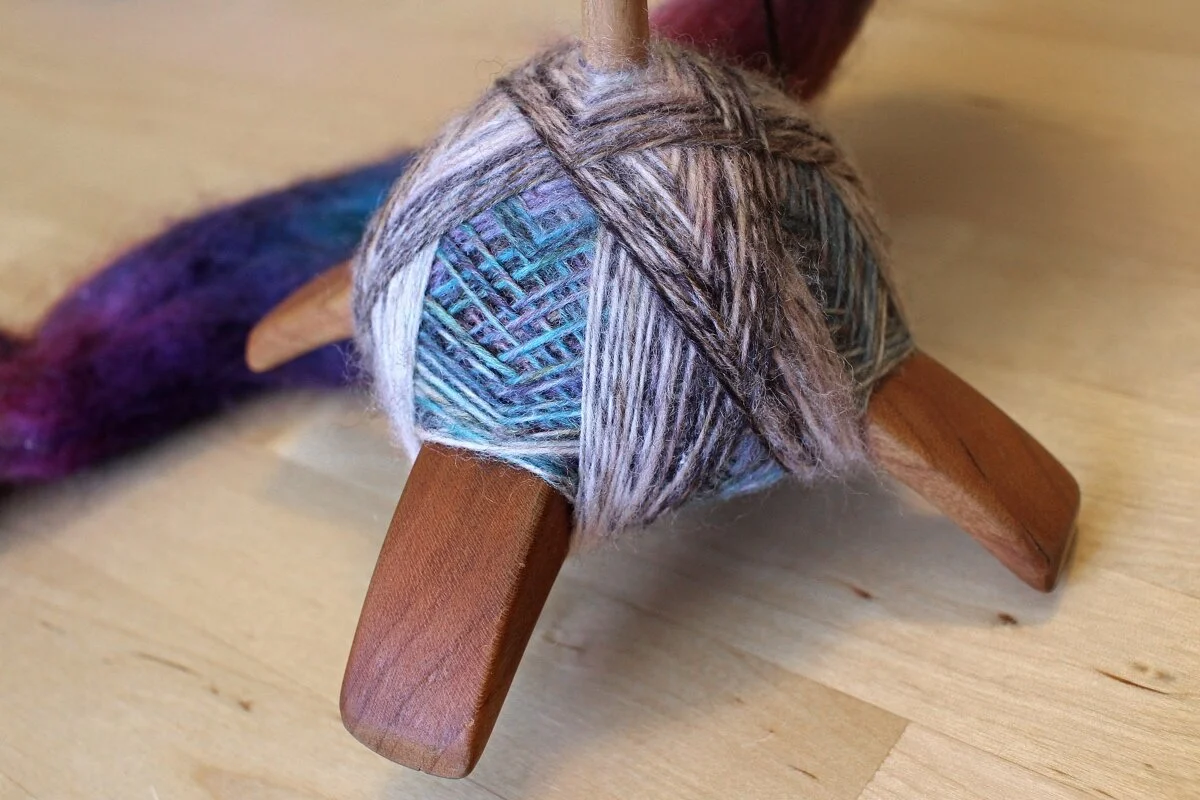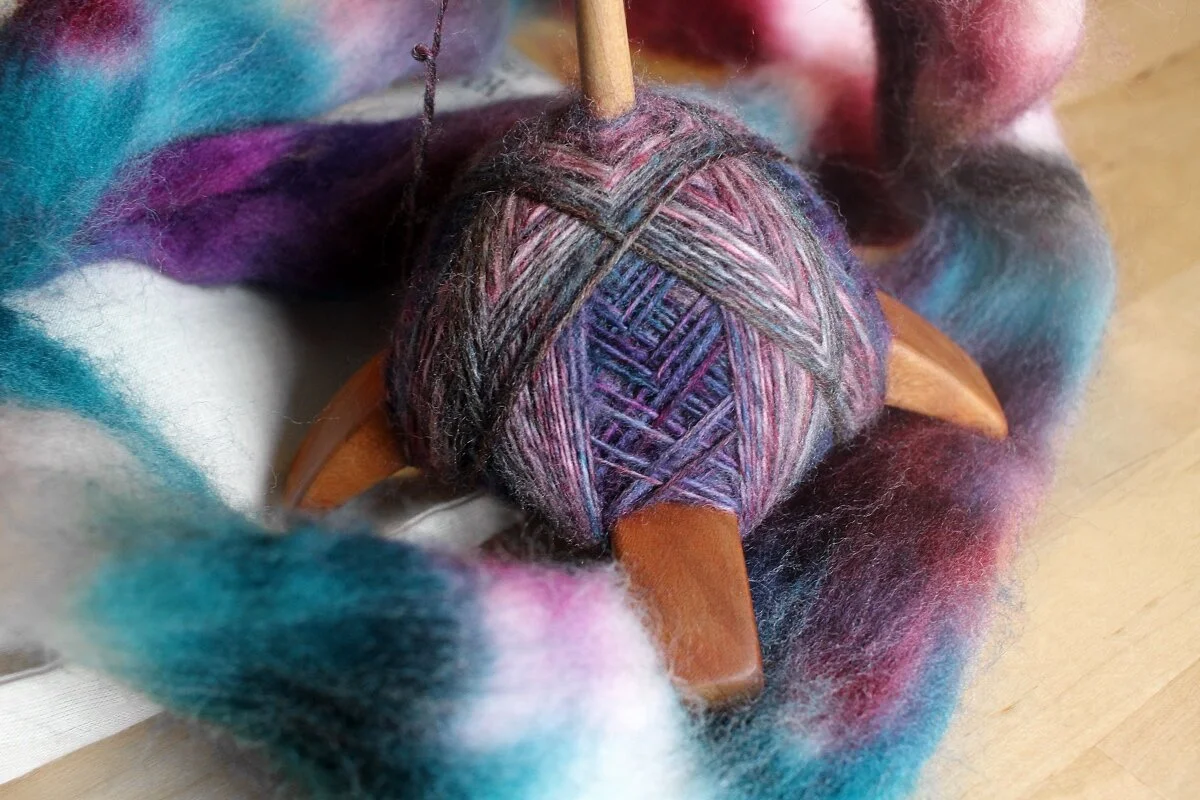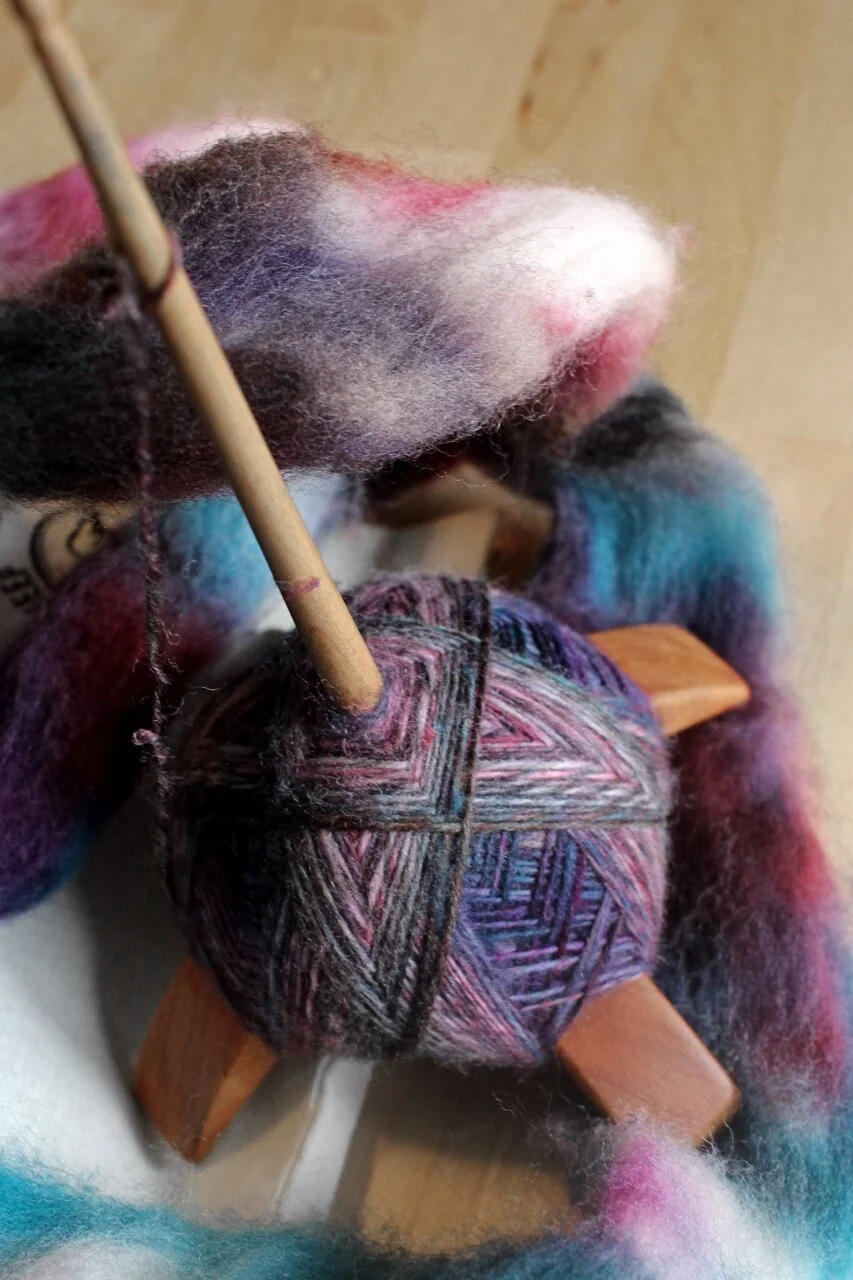Double The Stripes
/I’m been struggling to figure out what to say about these socks. They’re both great pairs, but everything I write about them sounds hollow. All this not writing/blogging business is taking its toll, and making it harder to find my voice. So I’m going to let the socks, all four of them, get things started.
I was out wandering the yarn aisles one day and came across a few balls of Patons Kroy Sock in a new to me color, Turquoise Stripes. This yarn is a staple of my sock stash and I’ve made so many comfy socks with it. Of course I had to get a few balls because I do love green sock yarn. Then I had a fun idea. Sure I could knit socks for me, but also the Kiddo, and the Bearded One. We could all have matching socks until Kiddo outgrows hers. Sounded like a great idea to me, and enough yarn came home to make it happen.
The first pair I started was for me because both of my most recent finished sock projects were for them. I stuck with my usual toe-up sock pattern. The only change was making the leg and cuff longer because I had the yarn.
I’ve knit this pattern dozens of times, but they were no means a quick project. They were the thing I knit when I had a few minutes of downtime at the playground, or riding in the car, or when I didn’t want to stare at my phone. So these took me about two months to finish. Then I got started on the Kiddo’s pair.
You’d think that these small socks would fly off the needles. I certainly hoped they would. But, nope. This pair took me two months to finish too. I also used my default sock pattern for these, just a sized down version. Of course, I made these with room to grow because she’s almost outgrown the last pair I made her at the beginning of the year. Maybe this pair will fit through to next winter. Maybe.
As cute as this pair is, making them was bittersweet. This was the first pair of her socks that needed more than a single 50g ball of sock yarn. It’s a good thing, but I can’t help but be a little sad about it. Probably won’t be long before she can wear my shoes.
After making these two pairs, I decided to knit the Bearded One socks with different yarn. I still love the color and the stripes, but I don’t think they’d look as nice at a larger stitch count. 64 - 70 stitches around seems to be the limit before the stripes turn to static. And I definitely need more than 70 stitches per round to make him a pair of socks. Think I’m going to use the extra yarn to make the kid another pair of socks when she eventually outgrows her current pair. Until then, I’m going to tackle all that gift knitting that’s piling up. Cute unicorns don’t knit themselves.


